

NASA Voyager 2 Could Be Nearing Interstellar Space
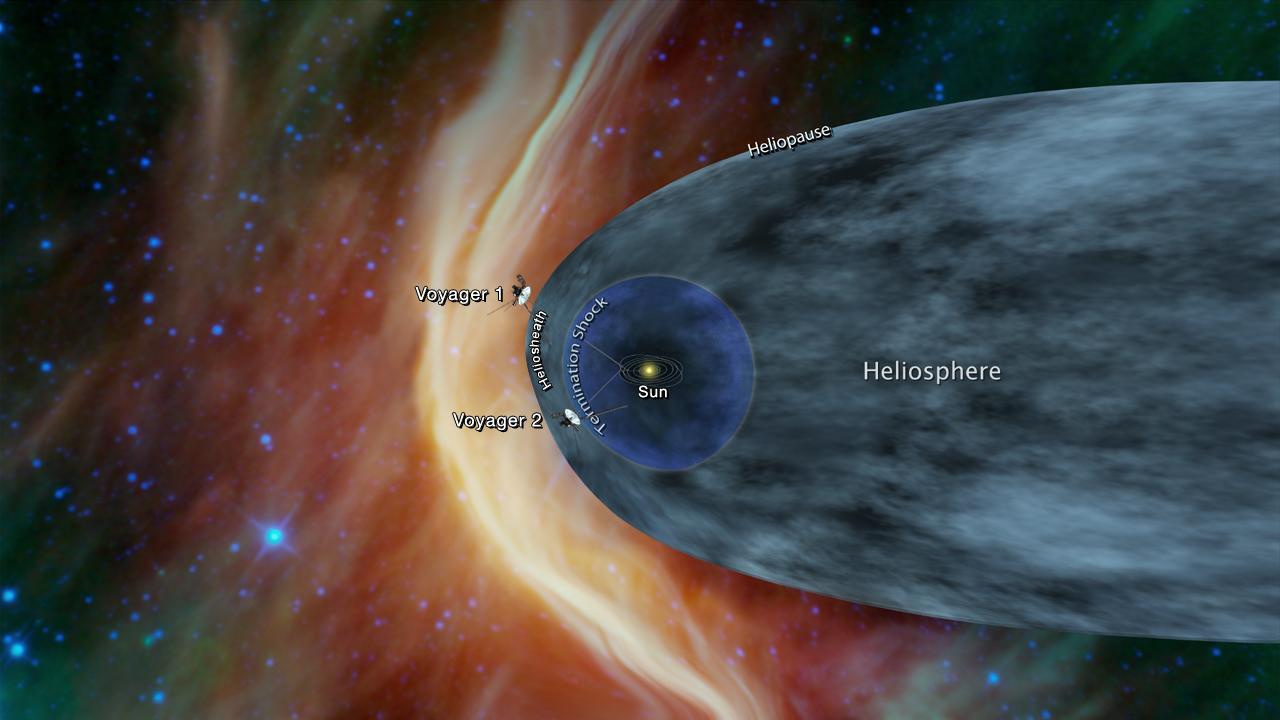
NASA's Voyager 2 probe, currently on a journey toward interstellar space, has detected an increase in cosmic rays that originate outside our solar system. Launched in 1977, Voyager 2 is a little less than 11 billion miles (about 17.7 billion kilometers) from Earth, or more than 118 times the distance from Earth to the Sun.
Since 2007 the probe has been traveling through the outermost layer of the heliosphere -- the vast bubble around the Sun and the planets dominated by solar material and magnetic fields. Voyager scientists have been watching for the spacecraft to reach the outer boundary of the heliosphere, known as the heliopause. Once Voyager 2 exits the heliosphere, it will become the second human-made object, after Voyager 1, to enter interstellar space.
Since late August, the Cosmic Ray Subsystem instrument on Voyager 2 has measured about a 5 percent increase in the rate of cosmic rays hitting the spacecraft compared to early August. The probe's Low-Energy Charged Particle instrument has detected a similar increase in higher-energy cosmic rays.
Cosmic rays are fast-moving particles that originate outside the solar system. Some of these cosmic rays are blocked by the heliosphere, so mission planners expect that Voyager 2 will measure an increase in the rate of cosmic rays as it approaches and crosses the boundary of the heliosphere.
In May 2012, Voyager 1 experienced an increase in the rate of cosmic rays similar to what Voyager 2 is now detecting. That was about three months before Voyager 1 crossed the heliopause and entered interstellar space.
However, Voyager team members note that the increase in cosmic rays is not a definitive sign that the probe is about to cross the heliopause. Voyager 2 is in a different location in the heliosheath -- the outer region of the heliosphere -- than Voyager 1 had been, and possible differences in these locations means Voyager 2 may experience a different exit timeline than Voyager 1.
The fact that Voyager 2 may be approaching the heliopause six years after Voyager 1 is also relevant, because the heliopause moves inward and outward during the Sun's 11-year activity cycle. Solar activity refers to emissions from the Sun, including solar flares and eruptions of material called coronal mass ejections. During the 11-year solar cycle, the Sun reaches both a maximum and a minimum level of activity.
"We're seeing a change in the environment around Voyager 2, there's no doubt about that," said Voyager Project Scientist Ed Stone, based at Caltech in Pasadena. "We're going to learn a lot in the coming months, but we still don't know when we'll reach the heliopause. We're not there yet -- that's one thing I can say with confidence."
The Voyager spacecraft were built by NASA's Jet Propulsion Laboratory in Pasadena, California, which continues to operate both. JPL is a division of Caltech. The Voyager missions are a part of the NASA Heliophysics System Observatory, managed by the Heliophysics Division of the Science Mission Directorate in Washington.
For more information about the Voyager spacecraft, visit:
- https://www.nasa.gov/voyager
- https://voyager.jpl.nasa.gov
News Media Contacts Calla Cofield Jet Propulsion Laboratory, Pasadena, Calif. 626-808-2469 [email protected] Jia-Rui Cook Jet Propulsion Laboratory, Pasadena, Calif. 818-354-0724 [email protected] Karen Fox NASA Headquarters, Washington 301-286-6284 [email protected]
News Release: 2018-232

Suggested Searches
- Climate Change
- Expedition 64
- Mars perseverance
- SpaceX Crew-2
- International Space Station
- View All Topics A-Z
Humans in Space
Earth & climate, the solar system, the universe, aeronautics, learning resources, news & events.
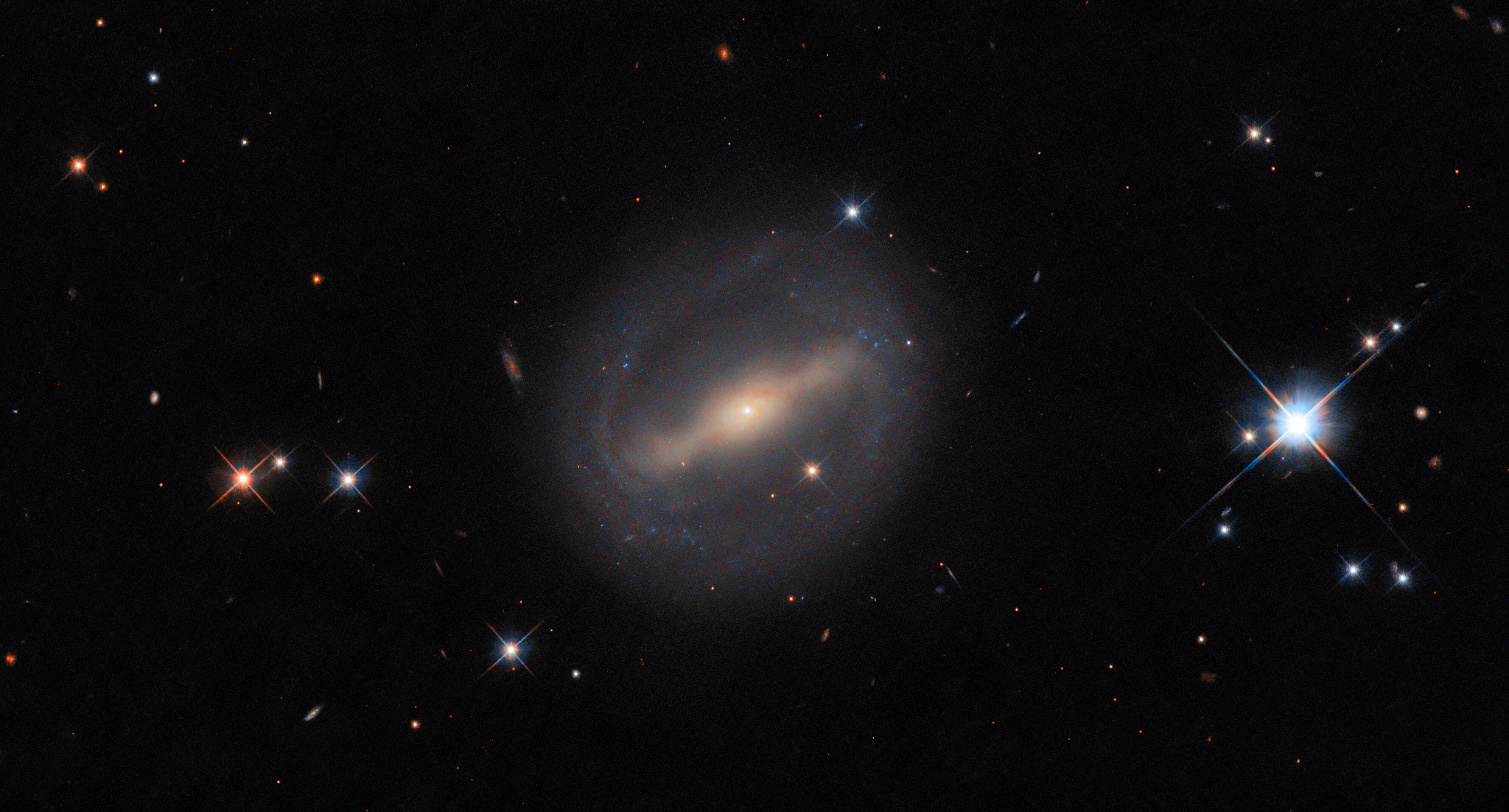
Hubble Rings in a New Galactic View

NASA’s Perseverance Rover to Begin Long Climb Up Martian Crater Rim
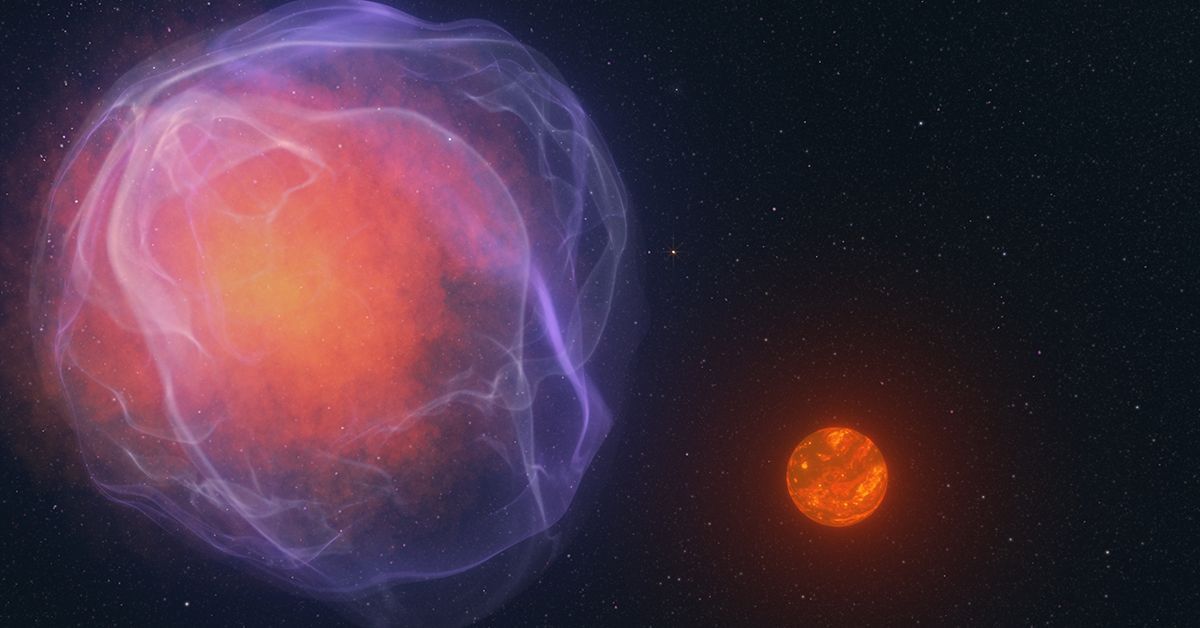
NASA Citizen Scientists Spot Object Moving 1 Million Miles Per Hour
- Search All NASA Missions
- A to Z List of Missions
- Upcoming Launches and Landings
- Spaceships and Rockets
- Communicating with Missions
- James Webb Space Telescope
- Hubble Space Telescope
- Why Go to Space
- Commercial Space
- Destinations
- Living in Space
- Explore Earth Science
- Earth, Our Planet
- Earth Science in Action
- Earth Multimedia
- Earth Science Researchers
- Pluto & Dwarf Planets
- Asteroids, Comets & Meteors
- The Kuiper Belt
- The Oort Cloud
- Skywatching
- The Search for Life in the Universe
- Black Holes
- The Big Bang
- Dark Energy & Dark Matter
- Earth Science
- Planetary Science
- Astrophysics & Space Science
- The Sun & Heliophysics
- Biological & Physical Sciences
- Lunar Science
- Citizen Science
- Astromaterials
- Aeronautics Research
- Human Space Travel Research
- Science in the Air
- NASA Aircraft
- Flight Innovation
- Supersonic Flight
- Air Traffic Solutions
- Green Aviation Tech
- Drones & You
- Technology Transfer & Spinoffs
- Space Travel Technology
- Technology Living in Space
- Manufacturing and Materials
- Science Instruments
- For Kids and Students
- For Educators
- For Colleges and Universities
- For Professionals
- Science for Everyone
- Requests for Exhibits, Artifacts, or Speakers
- STEM Engagement at NASA
- NASA's Impacts
- Centers and Facilities
- Directorates
- Organizations
- People of NASA
- Internships
- Our History
- Doing Business with NASA
- Get Involved
NASA en Español
- Aeronáutica
- Ciencias Terrestres
- Sistema Solar
- All NASA News
- Video Series on NASA+
- Newsletters
- Social Media
- Media Resources
- Upcoming Launches & Landings
- Virtual Events
- Sounds and Ringtones
- Interactives
- STEM Multimedia
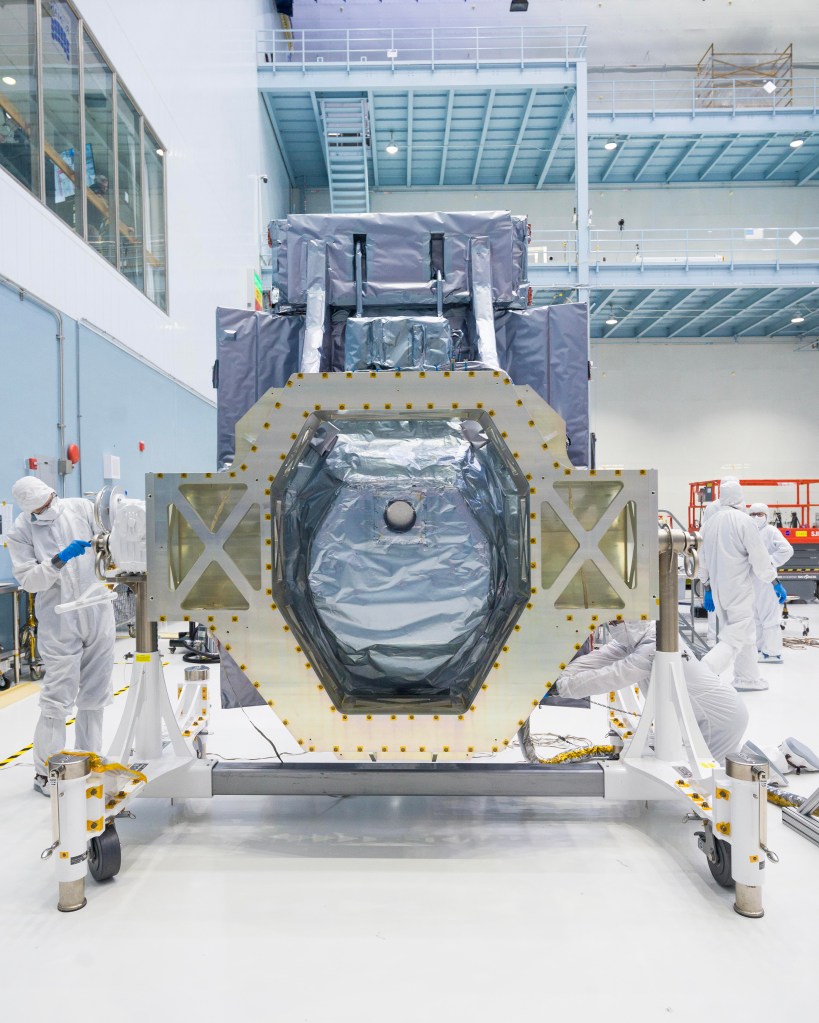
Primary Instrument for Roman Space Telescope Arrives at NASA Goddard
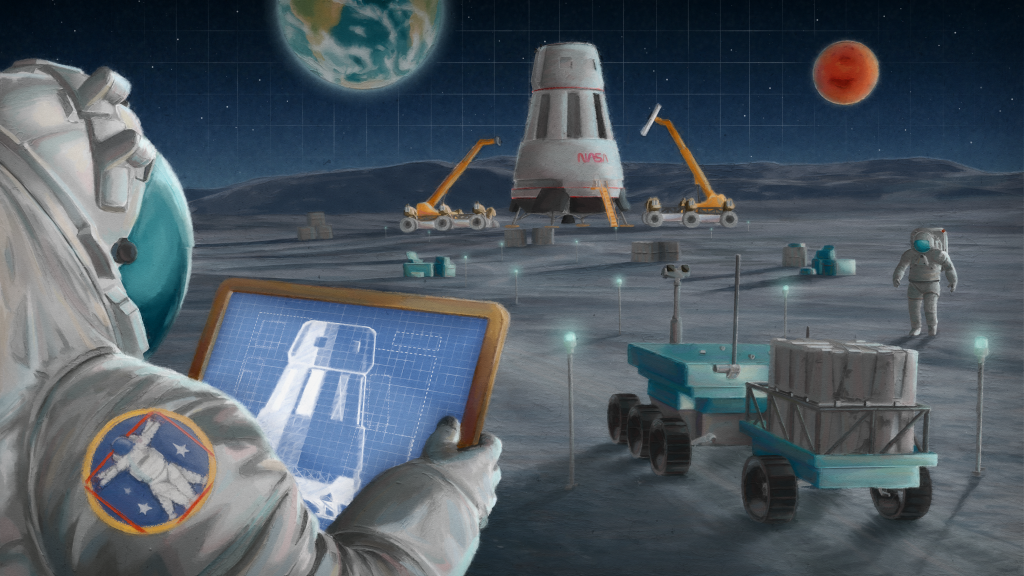
NextSTEP R: Lunar Logistics and Mobility Studies
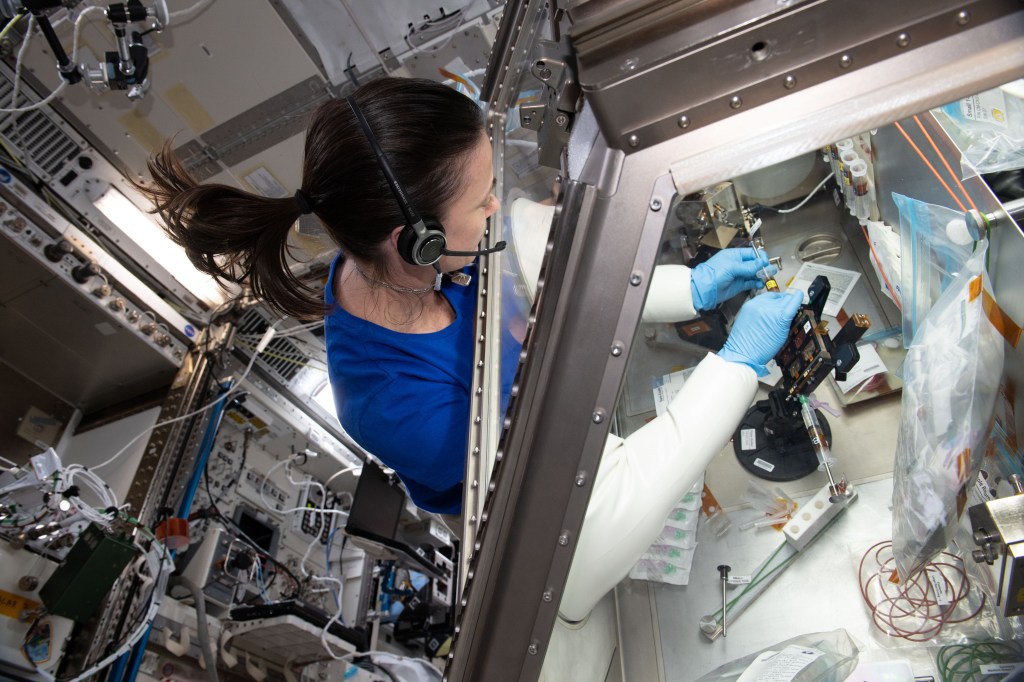
Station Science Top News: August 16, 2024
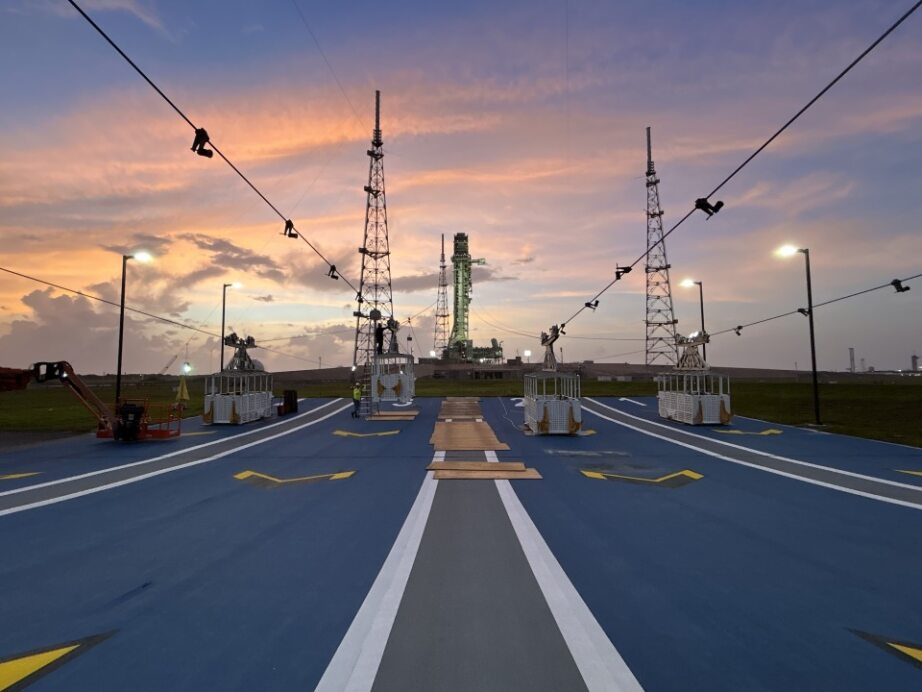
Artemis Emergency Egress System Emphasizes Crew Safety
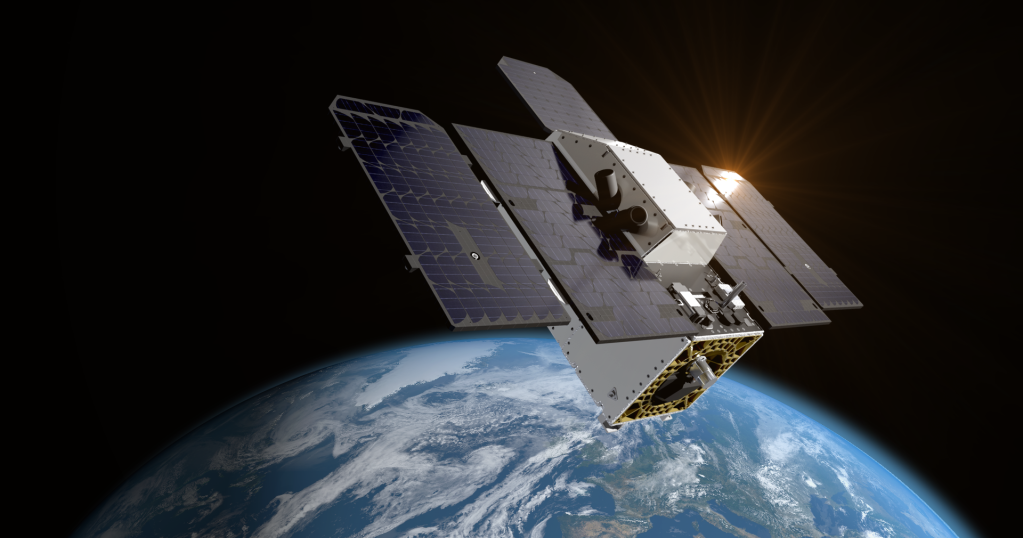
NASA-Designed Greenhouse Gas-Detection Instrument Launches
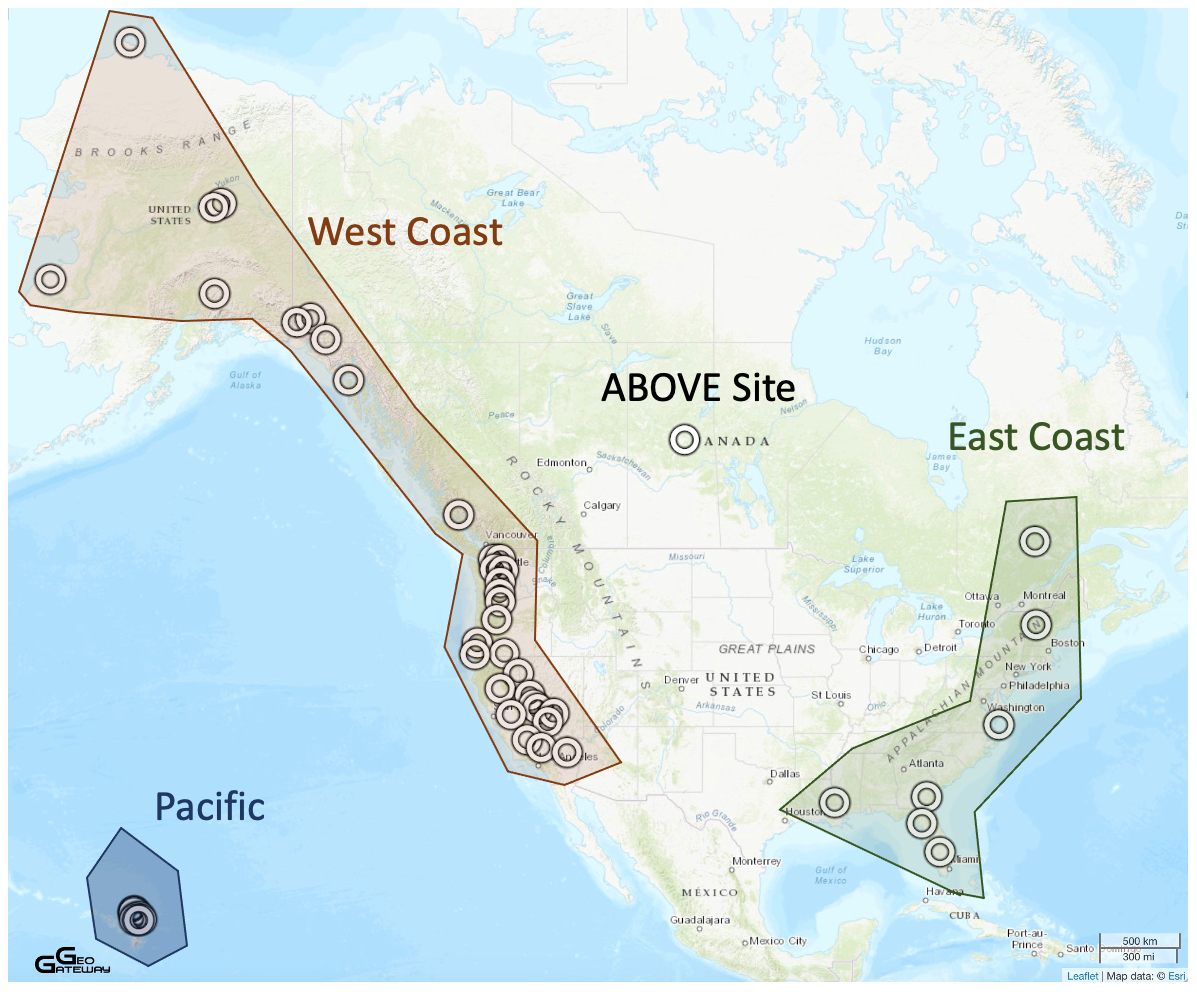
Airborne Surface, Cryosphere, Ecosystem, and Nearshore Topography

Amendment 42: A.30 Understanding Changes in High Mountain Asia Deferred to ROSES-25

Super Blue Moons: Your Questions Answered
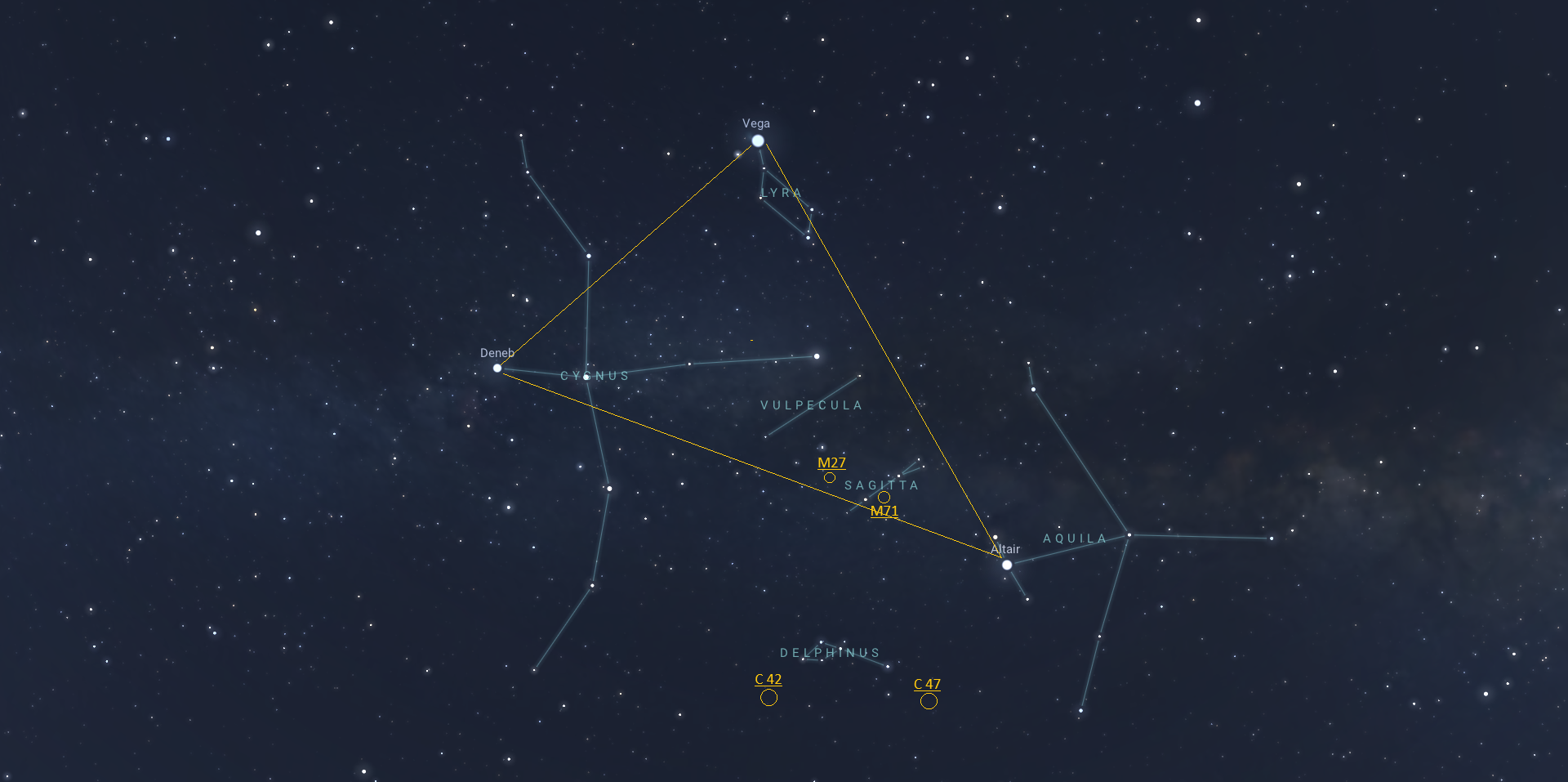
The Summer Triangle’s Hidden Treasures

Solar Eclipse Data Story Helps the Public Visualize the April 2024 Total Eclipse
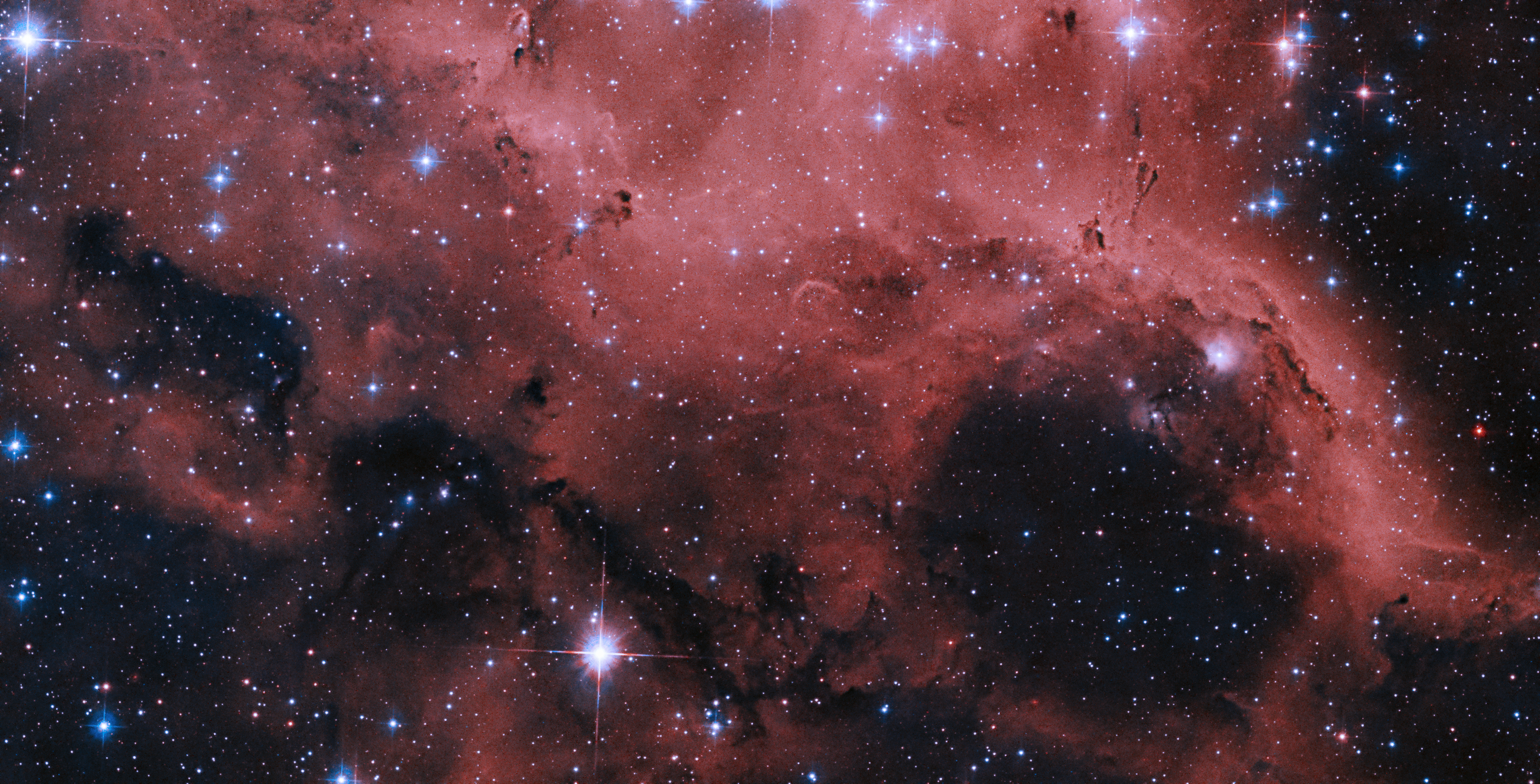
Hubble Spots Billowing Bubbles of Stellar Floss
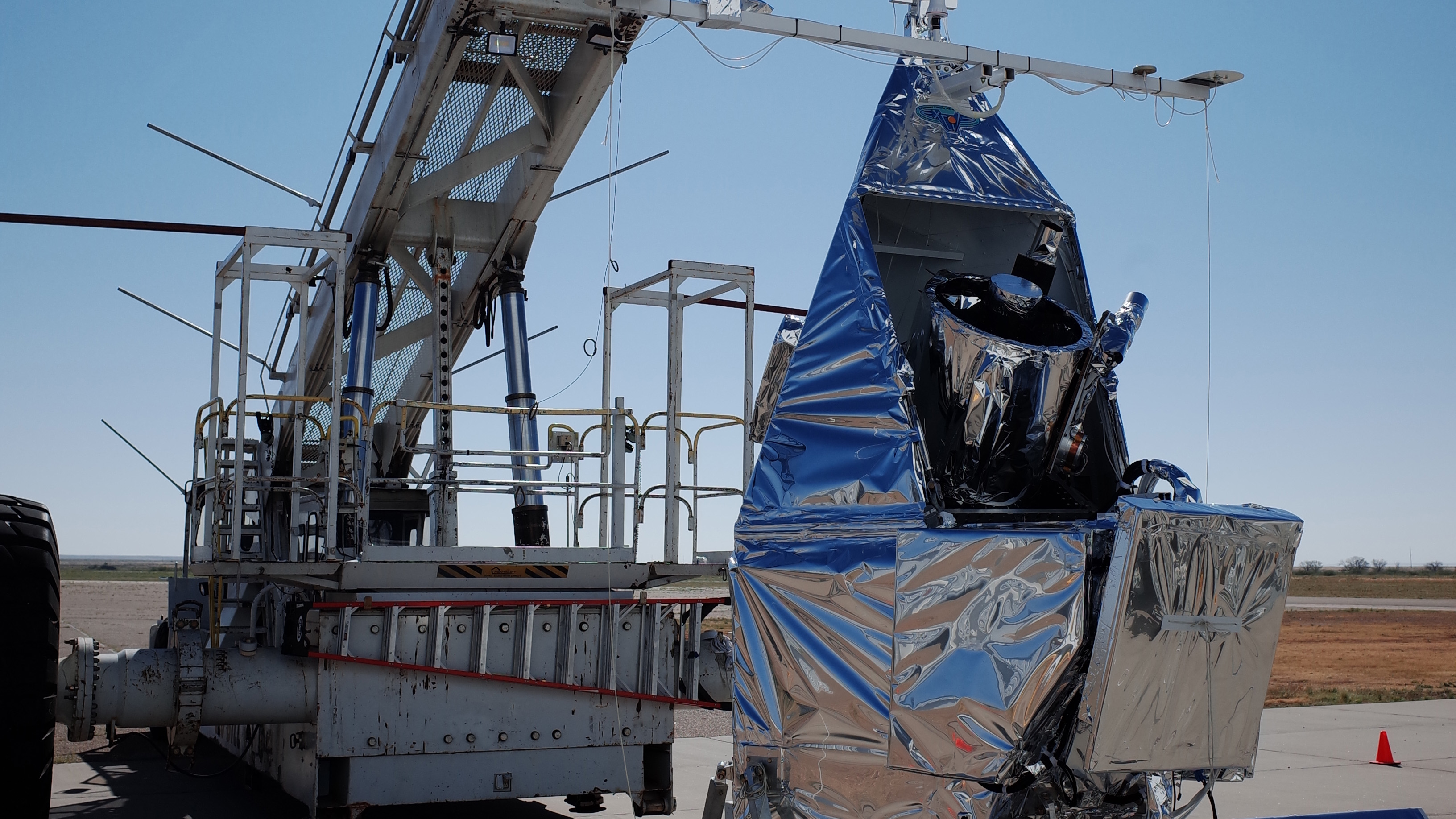
EXCITE (EXoplanet Climate Infrared TElescope)

Amendment 44: A.32 Precipitation Measurements Mission and CloudSat and Calipso Science Team Recompete Final Text and Due Dates

NASA Celebrates Ames’s Legacy of Research on National Aviation Day

At Work and Beyond, NASA Employees Find Joy in Aviation
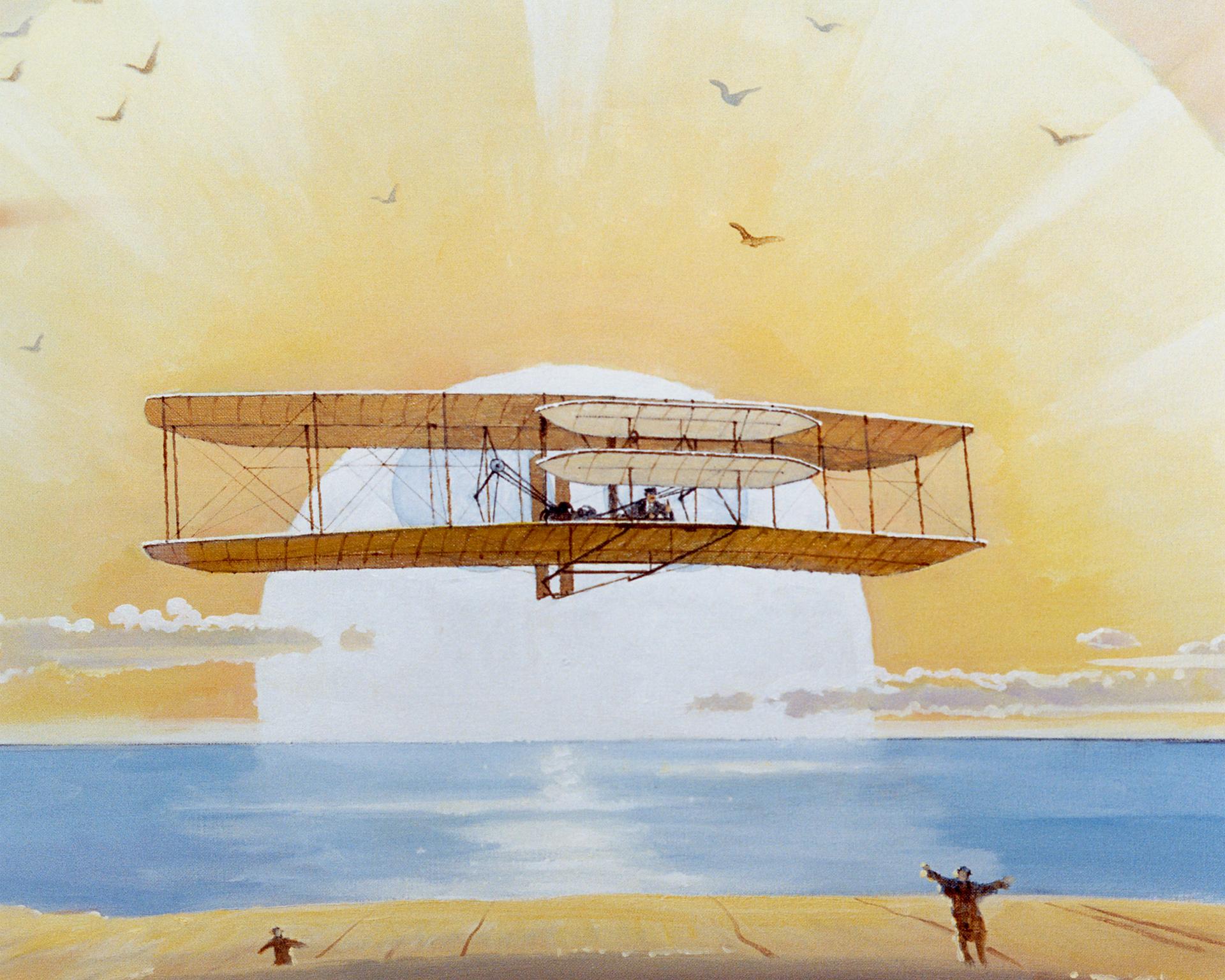
Orville Wright and National Aviation Day
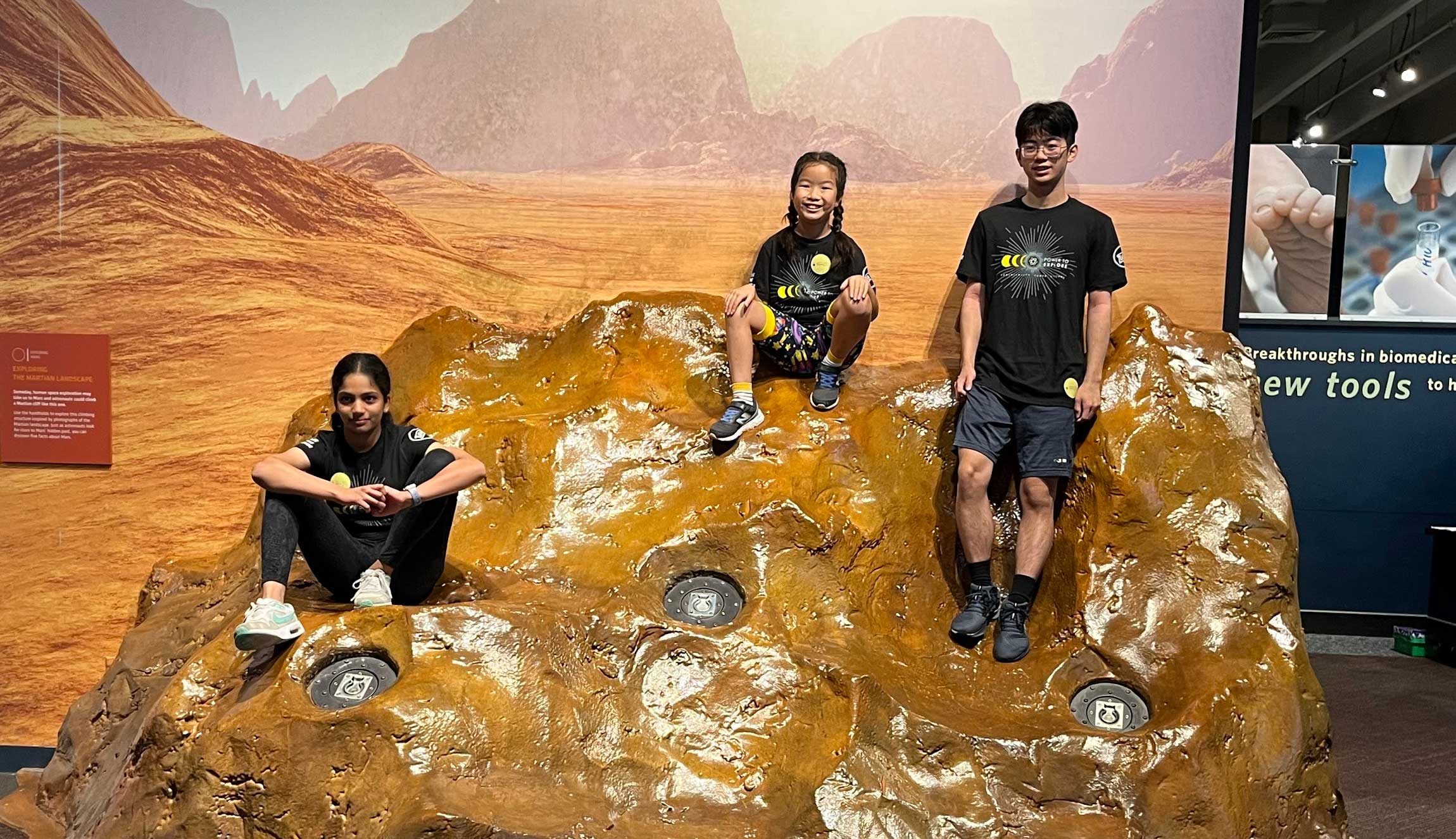
Perseverance Pays Off for Student Challenge Winners
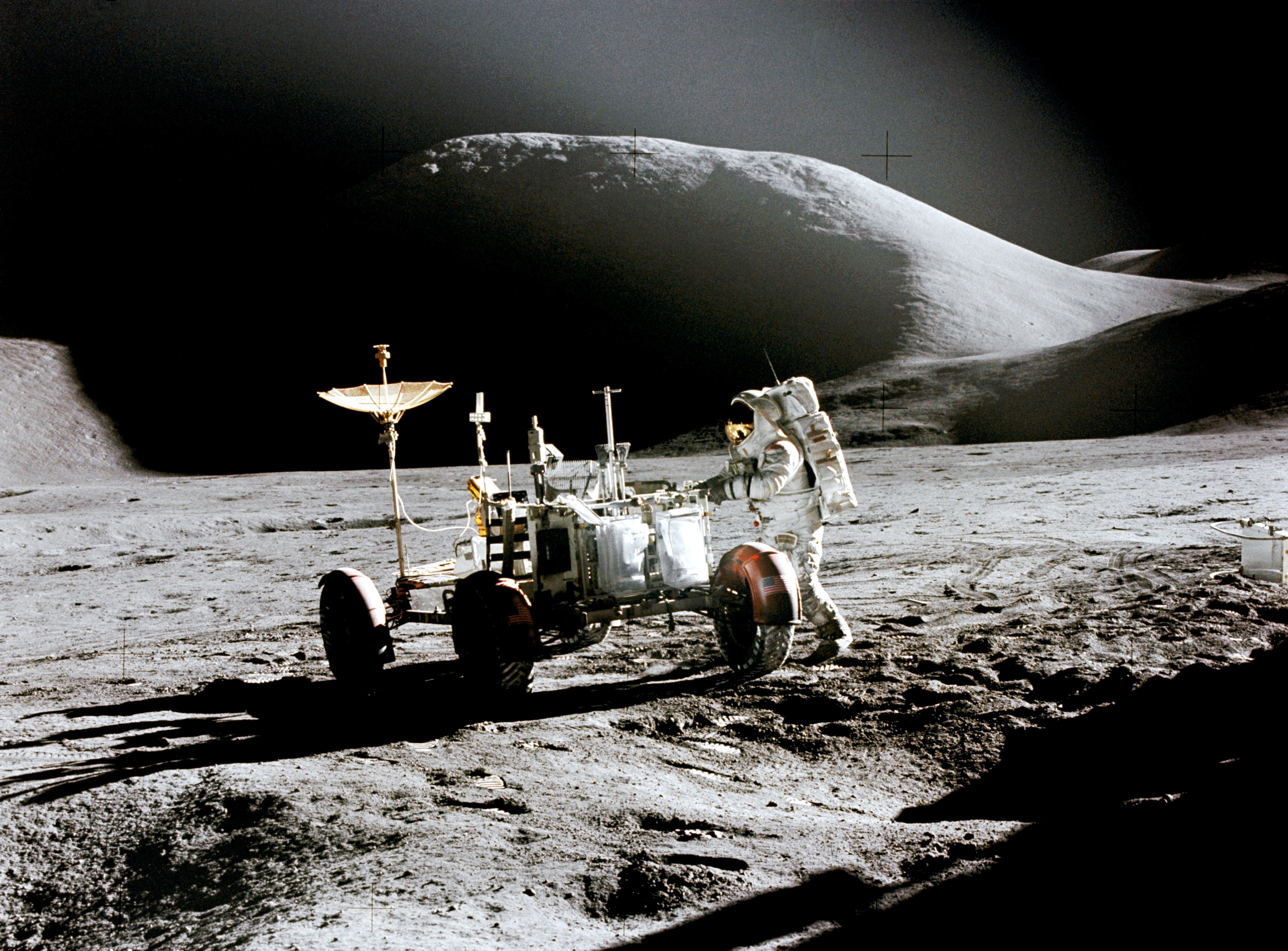
Amendment 41: DRAFT F.13 Lunar Terrain Vehicle Instruments Program Released for Community Comment.

How Do I Navigate NASA Learning Resources and Opportunities?

NASA Demonstrates ‘Ultra-Cool’ Quantum Sensor for First Time in Space

NASA Selects 5 New Roman Technology Fellows in Astrophysics

55 Years Ago: NASA Group 7 Astronaut Selection

Astronauta de la NASA Frank Rubio

Diez maneras en que los estudiantes pueden prepararse para ser astronautas

Astronauta de la NASA Marcos Berríos
Nasa’s voyager will do more science with new power strategy, jet propulsion laboratory, power to the probes, more about the mission.
The plan will keep Voyager 2’s science instruments turned on a few years longer than previously anticipated, enabling yet more revelations from interstellar space.
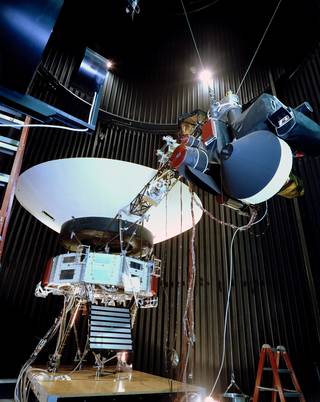
Editor’s note: Language was added in the second paragraph on May 1 to underscore that the mission will continue even after a science instrument is retired.
Launched in 1977, the Voyager 2 spacecraft is more than 12 billion miles (20 billion kilometers) from Earth, using five science instruments to study interstellar space. To help keep those instruments operating despite a diminishing power supply, the aging spacecraft has begun using a small reservoir of backup power set aside as part of an onboard safety mechanism. The move will enable the mission to postpone shutting down a science instrument until 2026, rather than this year.
Switching off a science instrument will not end the mission. After shutting off the one instrument in 2026, the probe will continue to operate four science instruments until the declining power supply requires another to be turned off. If Voyager 2 remains healthy, the engineering team anticipates the mission could potentially continue for years to come
Voyager 2 and its twin Voyager 1 are the only spacecraft ever to operate outside the heliosphere, the protective bubble of particles and magnetic fields generated by the Sun. The probes are helping scientists answer questions about the shape of the heliosphere and its role in protecting Earth from the energetic particles and other radiation found in the interstellar environment.
“The science data that the Voyagers are returning gets more valuable the farther away from the Sun they go, so we are definitely interested in keeping as many science instruments operating as long as possible,” said Linda Spilker, Voyager’s project scientist at NASA’s Jet Propulsion Laboratory in Southern California, which manages the mission for NASA.
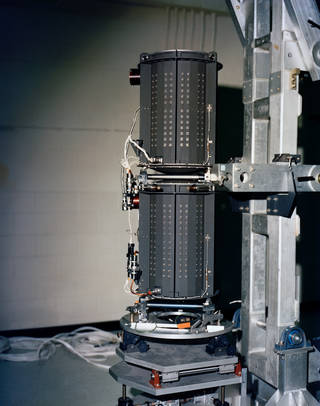
Both Voyager probes power themselves with radioisotope thermoelectric generators (RTGs), which convert heat from decaying plutonium into electricity. The continual decay process means the generator produces slightly less power each year. So far, the declining power supply hasn’t impacted the mission’s science output, but to compensate for the loss, engineers have turned off heaters and other systems that are not essential to keeping the spacecraft flying.
With those options now exhausted on Voyager 2, one of the spacecraft’s five science instruments was next on their list. (Voyager 1 is operating one less science instrument than its twin because an instrument failed early in the mission. As a result, the decision about whether to turn off an instrument on Voyager 1 won’t come until sometime next year.)
In search of a way to avoid shutting down a Voyager 2 science instrument, the team took a closer look at a safety mechanism designed to protect the instruments in case the spacecraft’s voltage – the flow of electricity – changes significantly. Because a fluctuation in voltage could damage the instruments, Voyager is equipped with a voltage regulator that triggers a backup circuit in such an event. The circuit can access a small amount of power from the RTG that’s set aside for this purpose. Instead of reserving that power, the mission will now be using it to keep the science instruments operating.
Although the spacecraft’s voltage will not be tightly regulated as a result, even after more than 45 years in flight, the electrical systems on both probes remain relatively stable, minimizing the need for a safety net. The engineering team is also able to monitor the voltage and respond if it fluctuates too much. If the new approach works well for Voyager 2, the team may implement it on Voyager 1 as well.
“Variable voltages pose a risk to the instruments, but we’ve determined that it’s a small risk, and the alternative offers a big reward of being able to keep the science instruments turned on longer,” said Suzanne Dodd, Voyager’s project manager at JPL. “We’ve been monitoring the spacecraft for a few weeks, and it seems like this new approach is working.”
The Voyager mission was originally scheduled to last only four years, sending both probes past Saturn and Jupiter. NASA extended the mission so that Voyager 2 could visit Neptune and Uranus; it is still the only spacecraft ever to have encountered the ice giants. In 1990, NASA extended the mission again, this time with the goal of sending the probes outside the heliosphere. Voyager 1 reached the boundary in 2012, while Voyager 2 (traveling slower and in a different direction than its twin) reached it in 2018.
A division of Caltech in Pasadena, JPL built and operates the Voyager spacecraft. The Voyager missions are a part of the NASA Heliophysics System Observatory, sponsored by the Heliophysics Division of the Science Mission Directorate in Washington.
For more information about the Voyager spacecraft, visit:
https://www.nasa.gov/voyager
Calla Cofield Jet Propulsion Laboratory, Pasadena, Calif. 626-808-2469 [email protected]

Voyager 1 and 2
Planetary voyage.
The twin spacecraft Voyager 1 and Voyager 2 were launched by NASA in separate months in the summer of 1977 from Cape Canaveral, Florida. As originally designed, the Voyagers were to conduct close up studies of Jupiter and Saturn, Saturn's rings, and the larger moons of the two planets.
To accomplish their two-planet mission, the spacecraft were built to last five years. But as the mission went on, and with the successful achievement of all its objectives, the additional flybys of the two outermost giant planets, Uranus and Neptune, proved possible -- and irresistible to mission scientists and engineers at the Voyagers' home at the Jet Propulsion Laboratory in Pasadena, California.
As the spacecraft flew across the solar system, remote-control reprogramming was used to endow the Voyagers with greater capabilities than they possessed when they left the Earth. Their two-planet mission became four. Their five-year lifetimes stretched to 12 and is now beyond 45 years.
Eventually, between them, Voyager 1 and 2 would explore all the giant outer planets of our solar system, 48 of their moons, and the unique systems of rings and magnetic fields those planets possess.
Had the Voyager mission ended after the Jupiter and Saturn flybys alone, it still would have provided the material to rewrite astronomy textbooks. But having doubled their already ambitious itineraries, the Voyagers returned to Earth information over the years that has revolutionized the science of planetary astronomy, helping to resolve key questions while raising intriguing new ones about the origin and evolution of the planets in our solar system.
The Grand Tour
History of the voyager mission.
The Voyager mission was designed to take advantage of a rare geometric arrangement of the outer planets in the late 1970s and the 1980s which allowed for a four-planet tour for a minimum of propellant and trip time. This layout of Jupiter, Saturn, Uranus and Neptune, which occurs about every 175 years, allows a spacecraft on a particular flight path to swing from one planet to the next without the need for large onboard propulsion systems. The flyby of each planet bends the spacecraft's flight path and increases its velocity enough to deliver it to the next destination. Using this "gravity assist" technique, first demonstrated with NASA's Mariner 10 Venus/Mercury mission in 1973-74, the flight time to Neptune was reduced from 30 years to 12.
While the four-planet mission was known to be possible, it was deemed to be too expensive to build a spacecraft that could go the distance, carry the instruments needed and last long enough to accomplish such a long mission. Thus, the Voyagers were funded to conduct intensive flyby studies of Jupiter and Saturn only. More than 10,000 trajectories were studied before choosing the two that would allow close flybys of Jupiter and its large moon Io, and Saturn and its large moon Titan; the chosen flight path for Voyager 2 also preserved the option to continue on to Uranus and Neptune.
From the NASA Kennedy Space Center at Cape Canaveral, Florida, Voyager 2 was launched first, on August 20, 1977; Voyager 1 was launched on a faster, shorter trajectory on September 5, 1977. Both spacecraft were delivered to space aboard Titan-Centaur expendable rockets.
Jupiter and Saturn
The prime Voyager mission to Jupiter and Saturn brought Voyager 1 to Jupiter on March 5, 1979, and Saturn on November 12, 1980, followed by Voyager 2 to Jupiter on July 9, 1979, and Saturn on August 25, 1981.
Voyager 1's trajectory, designed to send the spacecraft closely past the large moon Titan and behind Saturn's rings, bent the spacecraft's path inexorably northward out of the ecliptic plane -- the plane in which most of the planets orbit the Sun. Voyager 2 was aimed to fly by Saturn at a point that would automatically send the spacecraft in the direction of Uranus.
Voyager at Jupiter
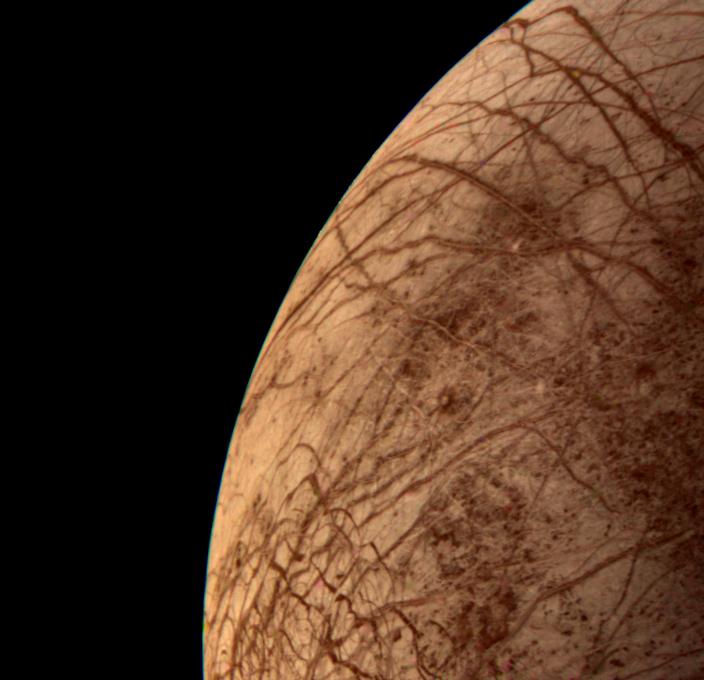
Jupiter Approach
NASA launched the two Voyager spacecraft to Jupiter, Saturn, Uranus, and Neptune in the late summer of 1977. Voyager 1's closest approach to Jupiter occurred March 5, 1979. Voyager 2's closest approach was July 9, 1979.
Photography of Jupiter began in January 1979, when images of the brightly banded planet already exceeded the best taken from Earth. Voyager 1 completed its Jupiter encounter in early April, after taking almost 19,000 pictures and many other scientific measurements. Voyager 2 picked up the baton in late April and its encounter continued into August. They took more than 33,000 pictures of Jupiter and its five major satellites.
Although astronomers had studied Jupiter from Earth for several centuries, scientists were surprised by many of Voyager 1 and 2's findings. They now understand that important physical, geological, and atmospheric processes go on - in the planet, its satellites, and magnetosphere - that were new to observers.
Discovery of active volcanism on the satellite Io was probably the greatest surprise. It was the first time active volcanoes had been seen on another body in the solar system. It appears that activity on Io affects the entire Jovian system. Io appears to be the primary source of matter that pervades the Jovian magnetosphere -- the region of space that surrounds the planet, primarily influenced by the planet's strong magnetic field. Sulfur, oxygen, and sodium, apparently erupted by Io's volcanoes and sputtered off the surface by impact of high-energy particles, were detected at the outer edge of the magnetosphere.
Voyager at Saturn
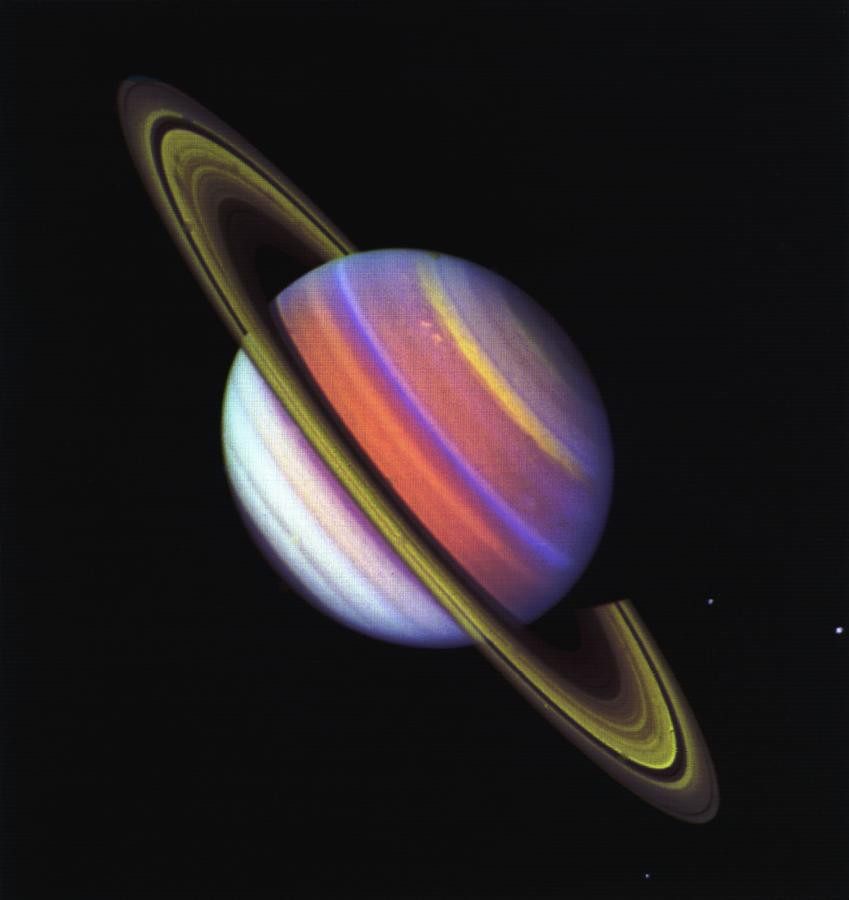
Saturn Approach
The Voyager 1 and 2 Saturn encounters occurred nine months apart, in November 1980 and August 1981. Voyager 1 is leaving the solar system. Voyager 2 completed its encounter with Uranus in January 1986 and with Neptune in August 1989, and is now also en route out of the solar system.
The two Saturn encounters increased our knowledge and altered our understanding of Saturn. The extended, close-range observations provided high-resolution data far different from the picture assembled during centuries of Earth-based studies.
Here is a summary of scientific findings by the two Voyagers at Saturn: SATURN Saturn's atmosphere is almost entirely hydrogen and helium. Voyager 1 found that about 7 percent of the volume of Saturn's upper atmosphere is helium (compared with 11 percent of Jupiter's atmosphere), while almost all the rest is hydrogen. Since Saturn's internal helium abundance was expected to be the same as Jupiter's and the Sun's, the lower abundance of helium in the upper atmosphere may imply that the heavier helium may be slowly sinking through Saturn's hydrogen; that might explain the excess heat that Saturn radiates over energy it receives from the Sun. (Saturn is the only planet less dense than water. In the unlikely event that a lake could be found large enough, Saturn would float in it.)
Subdued contrasts and color differences on Saturn could be a result of more horizontal mixing or less production of localized colors than in Jupiter's atmosphere. While Voyager 1 saw few markings, Voyager 2's more sensitive cameras saw many: Long-lived ovals, tilted features in east-west shear zones, and others similar to, but generally smaller than, on Jupiter.
Winds blow at high speeds in Saturn. Near the equator, the Voyagers measured winds about 500 meters a second (1,100 miles an hour). The wind blows mostly in an easterly direction. Strongest winds are found near the equator, and velocity falls off uniformly at higher latitudes. At latitudes greater than 35 degrees, winds alternate east and west as latitude increases. Marked dominance of eastward jet streams indicates that winds are not confined to the cloud layer, but must extend inward at least 2,000 kilometers (1,200 miles). Furthermore, measurements by Voyager 2 showing a striking north-south symmetry that leads some scientists to suggest the winds may extend from north to south through the interior of the planet.
While Voyager 2 was behind Saturn, its radio beam penetrated the upper atmosphere, and measured temperature and density. Minimum temperatures of 82 Kelvins (-312 degrees Fahrenheit) were found at the 70-millibar level (surface pressure on Earth is 1,000 millibars). The temperature increased to 143 Kelvins (-202 degrees Fahrenheit) at the deepest levels probed - - about 1,200 millibars. Near the north pole temperatures were about 10 degrees Celsius (18 degrees Fahrenheit) colder at 100 millibars than at mid-latitudes. The difference may be seasonal.
The Voyagers found aurora-like ultraviolet emissions of hydrogen at mid-latitudes in the atmosphere, and auroras at polar latitudes (above 65 degrees). The high-level auroral activity may lead to formation of complex hydrocarbon molecules that are carried toward the equator. The mid-latitude auroras, which occur only in sunlit regions, remain a puzzle, since bombardment by electrons and ions, known to cause auroras on Earth, occurs primarily at high latitudes.
Both Voyagers measured the rotation of Saturn (the length of a day) at 10 hours, 39 minutes, 24 seconds.
Uranus and Neptune
After Voyager 2's successful Saturn encounter, it was shown that Voyager 2 would likely be able to fly on to Uranus with all instruments operating. NASA provided additional funding to continue operating the two spacecraft and authorized JPL to conduct a Uranus flyby. Subsequently, NASA also authorized the Neptune leg of the mission, which was renamed the Voyager Neptune Interstellar Mission.
Voyager 2 encountered Uranus on January 24, 1986, returning detailed photos and other data on the planet, its moons, magnetic field and dark rings. Following Voyager 2's closest approach to Neptune on August 25, 1989, the spacecraft flew southward, below the ecliptic plane and onto a course that will take it, too, to interstellar space.
Uranus Approach
NASA's Voyager 2 spacecraft flew closely past distant Uranus, the seventh planet from the Sun, in January 1986. At its closest, the spacecraft came within 81,500 kilometers (50,600 miles) of Uranus's cloudtops on Jan. 24, 1986.
Voyager 2 radioed thousands of images and voluminous amounts of other scientific data on the planet, its moons, rings, atmosphere, interior and the magnetic environment surrounding Uranus.
Since launch on Aug. 20, 1977, Voyager 2's itinerary has taken the spacecraft to Jupiter in July 1979, Saturn in August 1981, and then Uranus. Voyager 2's next encounter was with Neptune in August 1989. Both Voyager 2 and its twin, Voyager 1, will eventually leave our solar system and enter interstellar space.
Voyager 2's images of the five largest moons around Uranus revealed complex surfaces indicative of varying geologic pasts. The cameras also detected 11 previously unseen moons. Several instruments studied the ring system, uncovering the fine detail of the previously known rings and two newly detected rings. Voyager data showed that the planet's rate of rotation is 17 hours, 14 minutes. The spacecraft also found a Uranian magnetic field that is both large and unusual. In addition, the temperature of the equatorial region, which receives less sunlight over a Uranian year, is nevertheless about the same as that at the poles.
Neptune Approach
In the summer of 1989, NASA's Voyager 2 became the first spacecraft to observe the planet Neptune, its final planetary target. Passing about 4,950 kilometers (3,000 miles) above Neptune's north pole, Voyager 2 made its closest approach to any planet 12 years after leaving Earth in 1977. Five hours later, Voyager 2 passed about 40,000 kilometers (25,000 miles) from Neptune's largest moon, Triton, the last solid body the spacecraft will have an opportunity to study.
Neptune is one of the class of planets -- all of them beyond the asteroid belt -- known as gas giants; the others in this class are Jupiter, Saturn and Uranus. These planets are about 4 to 12 times greater in diameter than Earth. They have no solid surfaces but possess massive atmospheres that contain substantial amounts of hydrogen and helium with traces of other gases.
Voyager 1, launched September 5, 1977, visited Jupiter in 1979 and Saturn in 1980. It is now leaving the solar system, rising above the ecliptic plane at an angle of about 35 degrees, at a rate of about 520 million kilometers a year.
Voyager 2, launched August 20, 1977, visited Jupiter in 1979, Saturn in 1981 and Uranus in 1986 before making its closest approach to Neptune on August 25, 1989. Voyager 2 traveled 12 years at an average velocity of 19 kilometers a second (about 42,000 miles an hour) to reach Neptune, which is 30 times farther from the Sun than Earth is. Voyager observed Neptune almost continuously from June to October 1989. Now Voyager 2 is also headed out of the solar system, diving below the ecliptic plane at an angle of about 48 degrees and a rate of about 470 million kilometers a year.
Both spacecraft will continue to study ultraviolet sources among the stars, and their fields and particles detectors will continue to search for the boundary between the Sun's influence and interstellar space. If all goes well, we will be able to communicate with the two spacecraft for another 20 years, until their radioactive power sources can no longer supply enough electrical energy to power critical subsystems.
Going Interstellar
Voyager 1, meanwhile, continues to press outward, conducting studies of interplanetary space. Reflecting the Voyagers' new transplanetary destinations, the project is now known as the Voyager Interstellar Mission.
Voyager 1 has crossed into the heliosheath and is leaving the solar system, rising above the ecliptic plane at an angle of about 35 degrees at a rate of about 520 million kilometers (about 320 million miles) a year. (Voyager 1 entered interstellar space on August 25, 2012.) Voyager 2 is also headed out of the solar system, diving below the ecliptic plane at an angle of about 48 degrees and a rate of about 470 million kilometers (about 290 million miles) a year.
Both spacecraft will continue to study ultraviolet sources among the stars, and the fields and particles instruments aboard the Voyagers will continue to explore the boundary between the Sun's influence and interstellar space. Communications will be maintained until the Voyagers' power sources can no longer supply enough electrical energy to power critical subsystems.
Voyager 1 and 2 Hyperbolic Orbital Elements - November 1989
The following are hyperbolic elements for NASA's Voyager 1 and 2 during various legs of their travels to the outer planets of the solar system.
Voyager 1 was launched in September 1977 and flew by Jupiter and Saturn. Voyager 2 was launched in August 1977 and flew by Jupiter, Saturn, Uranus and Neptune. Both spacecraft are now headed out of the solar system into interstellar space.
These data were provided by Steve Matousek, trajectory engineer for the Voyager Project at the Jet Propulsion Laboratory.
Abbreviations used:
ET = Ephemeris Time a = semi-major axis (kilometers) e = eccentricity i = inclination (degrees)
OM = longitude of ascending node (degrees) (big omega) o = argument of perifocus (degrees) (small omega) M = mean anomaly (degrees)
i, OM and o are Sun-centered, Earth ecliptic of 1950.0, except at planetary encounters where the elements are planet-centered.

After 45 years, the 5-billion-year legacy of the Voyager 2 interstellar probe is just beginning
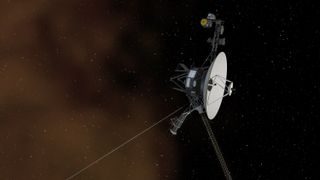
This article was originally published at The Conversation. The publication contributed the article to Space.com's Expert Voices: Op-Ed & Insights .
Alice Gorman , Associate Professor in Archaeology and Space Studies, Flinders University
On Aug. 20, 1977, 45 years ago, an extraordinary spacecraft left this planet on a journey like no other. Voyager 2 was going to show us, for the first time, what the outer solar system planets looked like close-up. It was like sending a fly to New York City and asking it to report back.
Voyager 1 was launched after Voyager 2, on Sept.5. Attached to the flank of each Voyager was a Golden Record carrying greetings, sounds, images and music from Earth .
The spacecraft were more or less twins, but they had different trajectories and scientific instruments. While both flew by Jupiter and Saturn , Voyager 1 then sped onwards to interstellar space. Voyager 2 tarried to make the only visit ever to the ice giants, Uranus and Neptune .
Gallery : Celebrate 45 years of Voyager with these amazing images of our solar system
The many-colored worlds
Arriving at Uranus in 1986, Voyager 2 mapped pale blue-green clouds and a possible "dark spot," which was later confirmed by the Hubble Space Telescope . There was an unexpected magnetic field , which dragged a corkscrew trail of particles behind the planet as it rolled in its orbit. Ten new moons were discovered, including the grey, cratered Puck , and two new coal-black rings.
Get the Space.com Newsletter
Breaking space news, the latest updates on rocket launches, skywatching events and more!
Three years later Voyager 2 reached Neptune and sent home images of teal and cobalt clouds swirled by winds up to 11,000 mph (18,000 kph). A slate-colored "great dark spot" indicated a storm the diameter of Earth. The largest moon, Triton , was blushed pink from methane ice and spouted geysers of frozen nitrogen .
No spacecraft has been back since.


Messages to the future
Even more than these glimpses of the far icy planets, what fascinates people about the Voyager mission is the famous Golden Records . A committee led by visionary astronomer Carl Sagan worked for over a year to assemble materials to represent planet Earth. The music garners the most attention as the "mix tape for the universe," but it's not the only highlight.
One of the sounds of Earth is the manufacture of stone tools , or "knapping." This is the most durable technology humans and their ancestors have devised, in use from around 3 million years ago to the present day. For most of human existence, the sound of stone striking stone to detach a sharp-edged cutting flake was heard daily in every community.
On the record, you can hear the thuds of stone against the sound of heartbeats.
In one of the 116 images, a Black scientist in a lab coat bends over a microscope, tiered earrings falling gracefully from her ears. The earrings were the subject of some debate: would a future alien viewer recognize the concept of "jewelry"? It was hoped this image, together with the photomicrograph of cells dividing in image 17, would help viewers figure out that the science of microscopy was known on our planet.
People recorded messages in 55 languages . Some are ancient languages, such as Akkadian and Hittite, not heard on Earth for thousands of years. The most common words used are "greetings," "peace" and "friend." The Portuguese greeting, spoken by Janet Sternberg, says simply "Peace and happiness to all."
The long farewell
Finally, in 2018, Voyager 2 joined Voyager 1 beyond the heliopause, where the solar wind is turned back by winds from interstellar space. Our galaxy is 100,000 light-years across, and Voyager 2 is now just under 18 light-hours away from Earth.
Both spacecraft send reedy signals that wend their way between the planets to the three antennas which are still listening: Tidbinbilla , Goldstone and Madrid.
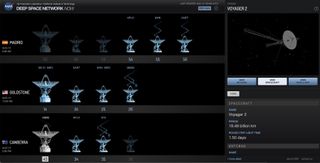
Before they can truly leave, the Voyagers will have to travel through the Oort Cloud , a vast, dark sphere of icy objects surrounding the solar system, for another 20,000 years.
Slowly, Voyager 2's systems are being shut down to eke out the power as long as possible. But sometime in the 2030s there will be none left.
Even after Voyager 2 stops transmitting, it won't be completely dead. The half-life of the plutonium-238 in its nuclear power source is 87.7 years, while that of the the small patch of uranium-238 coating on the Golden Record is 4.5 billion years. Both elements are slowly turning into lead.
The radioactive transmutation of the elements is a kind of reverse alchemy at a cosmic time scale. This process of becoming will not end until there is nothing on Voyager 2 left to be transformed.
Cultural significance
Constant bombardment by dust particles will gradually erode the surfaces of Voyager 2, likely at a higher rate than Voyager 1 because it's traveling through different regions of interstellar space. However, its Golden Record should be at least partially legible after 5 billion years.
The Earth portrayed on the Golden Records will probably be unrecognizable even 100 years from now. The spacecraft and the records will remain as a fragmentary archaeological record for an unknowable future.
— Alien-hunting array catches Voyager 1 signal from interstellar space — Voyager turns 45: What the iconic mission taught us and what's next — Voyager 1 marks 10 years in interstellar space
While the Golden Records are endlessly fascinating, the true cultural significance of the Voyagers lies in their location. The spacecraft are boundary markers showing the physical extent of human engagement with the universe.
When the Voyagers cease transmission, it will be like losing a sense. Telescopes can only show us so much: there is no substitute for being there.
Who will follow in their path?
This article is republished from The Conversation under a Creative Commons license. Read the original article .
Follow all of the Expert Voices issues and debates — and become part of the discussion — on Facebook and Twitter. The views expressed are those of the author and do not necessarily reflect the views of the publisher.
Join our Space Forums to keep talking space on the latest missions, night sky and more! And if you have a news tip, correction or comment, let us know at: [email protected].
Dr. Alice Gorman is an internationally recognized leader in the field of space archaeology. She is an Associate Professor in the College of Humanities, Arts and Social Sciences at Flinders University, where she teaches the Archaeology of Modern Society.
Her research focuses on the archaeology and heritage of space exploration, including space junk, planetary landing sites, off-earth mining, rocket launch pads and antennas.
She is a member of the American Institute of Aeronautics and Astronautics, the Advisory Council of the Space Industry Association of Australia and the Australian Institute of Aboriginal and Torres Strait Islander Studies.
Her book "Dr. Space Junk vs the Universe: Archaeology and the Future" (2019) won the Mark and Evette Moran NIB People's Choice Award for Non-Fiction and the John Mulvaney Book Prize, awarded by the Australian Archaeological Association. It was also shortlisted for the Queensland Premier's Literary Awards, the NSW Premier's Literary Awards, and the Adelaide Festival Literary Awards.
Alice tweets as @drspacejunk and blogs at Space Age Archaeology .
Space pictures! See our space image of the day
'The last 12 months have broken records like never before': Earth exceeds 1.5 C warming every month for entire year
Nikon Trailblazer 8x25 ATB compact binoculars review
Most Popular
- 2 'Star Trek: Discovery' final season lands on DVD, Blu-ray and limited edition Steelbook
- 3 Dinosaur-killing asteroid was a rare rock from beyond Jupiter, new study reveals
- 4 Para-astronaut John McFall hopes to see an ISS astronaut with a disability fly by 2030 (exclusive, video)
- 5 Google Pixel 8a review
- Skip to main content
- Keyboard shortcuts for audio player
After a 12.3 billion-mile 'shout,' NASA regains full contact with Voyager 2
Emily Olson
Ayana Archie

A NASA image of one of the twin Voyager space probes. The Jet Propulsion Laboratory lost contact with Voyager 2 on July 21 after mistakenly pointing its antenna 2 degrees away from Earth. On Friday, contact was fully restored. NASA/Getty Images hide caption
A NASA image of one of the twin Voyager space probes. The Jet Propulsion Laboratory lost contact with Voyager 2 on July 21 after mistakenly pointing its antenna 2 degrees away from Earth. On Friday, contact was fully restored.
Talk about a long-distance call.
NASA said it resumed full communications with the Voyager 2 on Friday after almost two weeks of silence from the interstellar spacecraft.
The agency's Jet Propulsion Laboratory said a series of ground antennas, part of the Deep Space Network, registered a carrier signal from Voyager 2 on Tuesday. However, the signal was too faint.
A Deep Space Network facility in Australia then sent "the equivalent of an interstellar 'shout' " to the Voyager 2 telling it to turn its antenna back toward Earth. The signal was sent more than 12.3 billion miles away and it took 37 hours to get a response from the spacecraft, NASA said.
Scientists received a response at about 12:30 a.m. ET Friday. Voyager 2 is now operating normally, returning science and telemetry data, and "remains on its expected trajectory," NASA said.
NASA said Friday that it lost contact with Voyager 2 on July 21 after "a series of planned commands" inadvertently caused the craft to turn its antenna 2 degrees away from the direction of its home planet.

NASA is keeping Voyager 2 going until at least 2026 by tapping into backup power
What might seem like a slight error had big consequences: NASA previously said it wouldn't be able to communicate with the craft until October, when the satellite would go through one of its routine repositioning steps.
"That is a long time to wait, so we'll try sending up commands several times" before October, program manager Suzanne Dodd told The Associated Press.

These are the 4 astronauts who'll take a trip around the moon next year
Even if Voyager 2 had failed to reestablish communications until fall, the engineers expected it to stay moving on its planned trajectory on the edge of the solar system.
Voyager 2 entered interstellar space in November 2018 — more than 40 years since it launched from Cape Canaveral, Fla. To this day, Voyager 2 remains one of only two human-made objects to ever operate outside the heliosphere, which NASA defines as "the protective bubble of particles and magnetic fields generated by the Sun."
Its primary mission was to study the outer solar system, and already, Voyager 2 has proved its status as a planetary pioneer . Equipped with several imaging instruments, the spacecraft is credited with documenting the discovery of 16 new moons, six new rings and Neptune's "Great Dark Spot."

Voyager 2 Bids Adieu To The Heliosphere, Entering Interstellar Space
Voyager 2 is also carrying some precious cargo, like a message in a bottle, should it find itself as the subject of another world's discovery: a golden record containing a variety of natural sounds, greetings in 55 languages and a 90-minute selection of music.
Last month's command mix-up foreshadows the craft's inevitable end an estimated three years from now.
"Eventually, there will not be enough electricity to power even one instrument," reads a NASA page documenting the spacecraft's travels . "Then, Voyager 2 will silently continue its eternal journey among the stars."
Meanwhile, Voyager 2's sister spacecraft, Voyager 1, is still broadcasting and transmitting data just fine from a slightly farther vantage point of 15 billion miles away.
Correction Aug. 3, 2023
A previous version of this article implied that Voyager 2 flew past Uranus in 2018 when, in fact, the spacecraft concluded its encounter with the planet and started heading toward Neptune in 1986. Voyager 2 entered interstellar space in November 2018.
- Jet Propulsion Laboratory

News | October 5, 2018
Nasa voyager 2 could be nearing interstellar space.
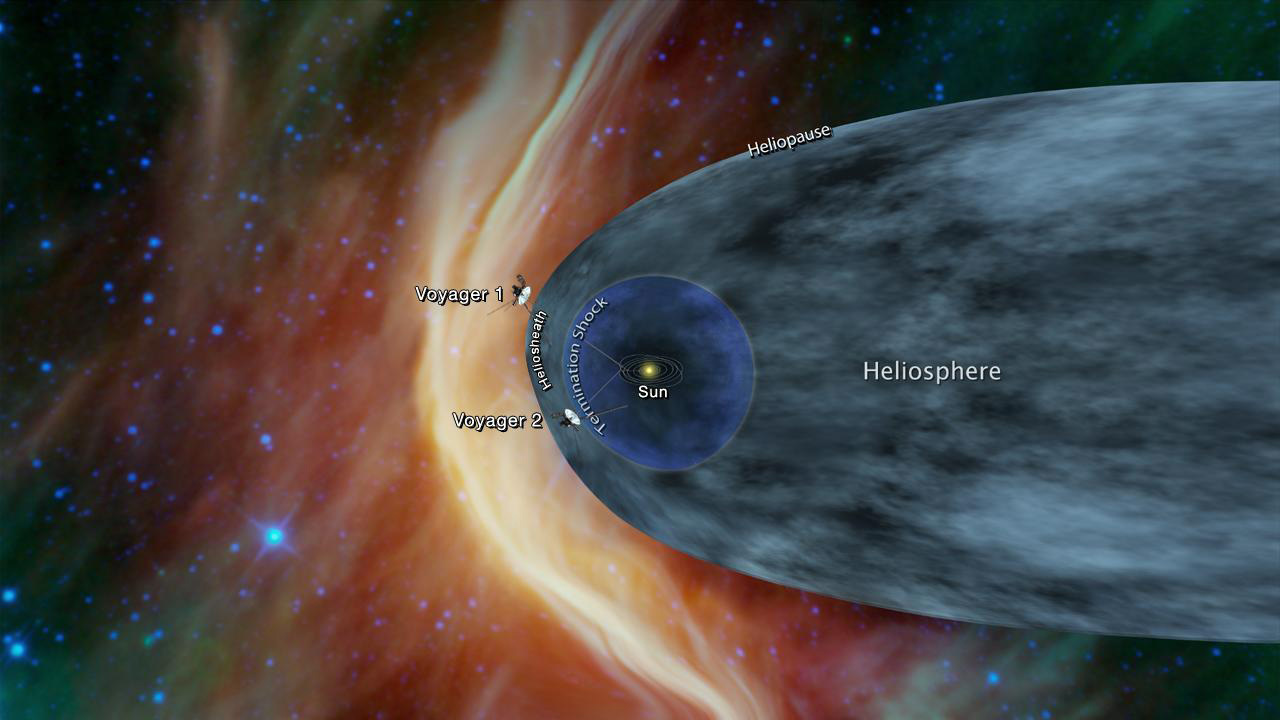
NASA's Voyager 2 probe, currently on a journey toward interstellar space, has detected an increase in cosmic rays that originate outside our solar system.
- Voyager 1 entered interstellar space in September 2013.
- Voyager 2 is the only spacecraft to visit all four giant outer planets — Jupiter (1979 ), Saturn ( 1981), Uranus (1986 ) and Neptune (1989).
- Three other spacecraft are on interstellar trajectories: New Horizons is closing in on a close encounter with a Kuiper Belt Object more about a billion miles beyond Pluto on Jan. 1, 2019. Pioneer 10 and Pioneer 11 are no longer functioning, but will eventually travel into interstellar space.
- The Voyager Golden Record
- The Pioneer Plaque
NASA's Voyager 2 probe, currently on a journey toward interstellar space, has detected an increase in cosmic rays that originate outside our solar system. Launched in 1977, Voyager 2 is a little less than 11 billion miles (about 17.7 billion kilometers) from Earth, or more than 118 times the distance from Earth to the Sun.
Since 2007 the probe has been traveling through the outermost layer of the heliosphere -- the vast bubble around the Sun and the planets dominated by solar material and magnetic fields. Voyager scientists have been watching for the spacecraft to reach the outer boundary of the heliosphere, known as the heliopause. Once Voyager 2 exits the heliosphere, it will become the second human-made object, after Voyager 1, to enter interstellar space.
Since late August, the Cosmic Ray Subsystem instrument on Voyager 2 has measured about a 5 percent increase in the rate of cosmic rays hitting the spacecraft compared to early August. The probe's Low-Energy Charged Particle instrument has detected a similar increase in higher-energy cosmic rays.
Cosmic rays are fast-moving particles that originate outside the solar system. Some of these cosmic rays are blocked by the heliosphere, so mission planners expect that Voyager 2 will measure an increase in the rate of cosmic rays as it approaches and crosses the boundary of the heliosphere.
In May 2012, Voyager 1 experienced an increase in the rate of cosmic rays similar to what Voyager 2 is now detecting. That was about three months before Voyager 1 crossed the heliopause and entered interstellar space.
However, Voyager team members note that the increase in cosmic rays is not a definitive sign that the probe is about to cross the heliopause. Voyager 2 is in a different location in the heliosheath -- the outer region of the heliosphere -- than Voyager 1 had been, and possible differences in these locations means Voyager 2 may experience a different exit timeline than Voyager 1.
The fact that Voyager 2 may be approaching the heliopause six years after Voyager 1 is also relevant, because the heliopause moves inward and outward during the Sun's 11-year activity cycle. Solar activity refers to emissions from the Sun, including solar flares and eruptions of material called coronal mass ejections. During the 11-year solar cycle, the Sun reaches both a maximum and a minimum level of activity.
"We're seeing a change in the environment around Voyager 2, there's no doubt about that," said Voyager Project Scientist Ed Stone, based at Caltech in Pasadena. "We're going to learn a lot in the coming months, but we still don't know when we'll reach the heliopause. We're not there yet -- that's one thing I can say with confidence."
The Voyager spacecraft were built by NASA's Jet Propulsion Laboratory in Pasadena, California, which continues to operate both. JPL is a division of Caltech. The Voyager missions are a part of the NASA Heliophysics System Observatory, managed by the Heliophysics Division of the Science Mission Directorate in Washington.
For more information about the Voyager spacecraft, visit:
https://www.nasa.gov/voyager
https://voyager.jpl.nasa.gov
News Media Contacts
Calla Cofield / Jia-Rui Cook Jet Propulsion Laboratory, Pasadena, Calif. 626-808-2469 / 818-354-0724 [email protected] / [email protected]
Karen Fox NASA Headquarters, Washington 301-286-6284 [email protected]
NASA Voyager 2 Could Be Nearing Interstellar Space

NASA's Voyager 2 probe, currently on a journey toward interstellar space, has detected an increase in cosmic rays that originate outside our solar system.
NASA's Voyager 2 probe, currently on a journey toward interstellar space, has detected an increase in cosmic rays that originate outside our solar system. Launched in 1977, Voyager 2 is a little less than 11 billion miles (about 17.7 billion kilometers) from Earth, or more than 118 times the distance from Earth to the Sun.
Since 2007 the probe has been traveling through the outermost layer of the heliosphere -- the vast bubble around the Sun and the planets dominated by solar material and magnetic fields. Voyager scientists have been watching for the spacecraft to reach the outer boundary of the heliosphere, known as the heliopause. Once Voyager 2 exits the heliosphere, it will become the second human-made object, after Voyager 1, to enter interstellar space.
Since late August, the Cosmic Ray Subsystem instrument on Voyager 2 has measured about a 5 percent increase in the rate of cosmic rays hitting the spacecraft compared to early August. The probe's Low-Energy Charged Particle instrument has detected a similar increase in higher-energy cosmic rays.
Cosmic rays are fast-moving particles that originate outside the solar system. Some of these cosmic rays are blocked by the heliosphere, so mission planners expect that Voyager 2 will measure an increase in the rate of cosmic rays as it approaches and crosses the boundary of the heliosphere.
In May 2012, Voyager 1 experienced an increase in the rate of cosmic rays similar to what Voyager 2 is now detecting. That was about three months before Voyager 1 crossed the heliopause and entered interstellar space.
However, Voyager team members note that the increase in cosmic rays is not a definitive sign that the probe is about to cross the heliopause. Voyager 2 is in a different location in the heliosheath -- the outer region of the heliosphere -- than Voyager 1 had been, and possible differences in these locations means Voyager 2 may experience a different exit timeline than Voyager 1.
The fact that Voyager 2 may be approaching the heliopause six years after Voyager 1 is also relevant, because the heliopause moves inward and outward during the Sun's 11-year activity cycle. Solar activity refers to emissions from the Sun, including solar flares and eruptions of material called coronal mass ejections. During the 11-year solar cycle, the Sun reaches both a maximum and a minimum level of activity.
"We're seeing a change in the environment around Voyager 2, there's no doubt about that," said Voyager Project Scientist Ed Stone, based at Caltech in Pasadena. "We're going to learn a lot in the coming months, but we still don't know when we'll reach the heliopause. We're not there yet -- that's one thing I can say with confidence."
The Voyager spacecraft were built by NASA's Jet Propulsion Laboratory in Pasadena, California, which continues to operate both. JPL is a division of Caltech. The Voyager missions are a part of the NASA Heliophysics System Observatory, managed by the Heliophysics Division of the Science Mission Directorate in Washington.
For more information about the Voyager spacecraft, visit:
https://www.nasa.gov/voyager
https://voyager.jpl.nasa.gov
News Media Contact
Calla Cofield / Jia-Rui Cook
Jet Propulsion Laboratory, Pasadena, Calif.
626-808-2469 / 818-354-0724
[email protected] / [email protected]
NASA Headquarters, Washington
202-358-1600
The Best Children's Site for all things Astronomy, Space and its Exploration!
Voyager 2 – To The Gas Giants & Beyond
Grand tour of the gas giants.
The Voyager 2 space probe was one of two probes launched as part of the Voyager Program in 1977 tasked with exploring the gas giants in the outer solar system . Voyager completed a gravitationally assisted ‘Grand Tour’ of all four gas giants which is only possible every 175 years. After its flyby of Neptune , the probe continued towards interstellar space with a speed of 15 km/s!
Fast Summary Facts About Voyager 2!
- Type: Flyby & Deep Space Explorer
- Destination: Jupiter, Saturn, Uranus & Neptune
- Status: Operational until 2025!
- Launch Weight: 826 kgs (1820 lbs)
- Launch Location: Cape Canaveral, Florida
- Launch Date: August 20 th 1977
- Flyby Of Neptune: August 25 th 1989
Interesting Fun Facts About The Voyager 2 Mission!
- Voyager 2 was one of two spacecraft made by the Jet Propulsion Laboratory (JPL) as part of the Voyager Program to explore the outer gas giant planets.
- Voyager 1’s objective was to flyby Jupiter , Saturn , Uranus , Neptune and their moons all at once as part of the so-called ‘Grand Tour’ which is only possible every 175 years!
- To this day Voyager 2 is still the only spacecraft to have visited the ice giants – Uranus and Neptune !
- To probe communicates with Earth via radio waves which are received and sent via NASA’s Deep Space Network stations.
- Despite launching aboard a Titan III rocket 16 days before the Voyager 1 spacecraft it reached Jupiter and Saturn second as it followed a longer trajectory!
- Following the spacecraft's flyby of Saturn , it became the fourth man-made spacecraft to achieve escape velocity; allowing it to leave the solar system forever!
- Voyager 2 is currently over 18 billion kilometres from Earth , making it the second most distant man-made object after Voyager 1 !
- Check out this cool NASA / JPL web page of the current mission status and statistics of both Voyager probes!
- It is expected that sometime after 2025, the power source for Voyager 2's instruments and a radio transmitter (the nuclear-powered generator) will be depleted to a point it will no longer be able to communicate with scientists on Earth.
- The Voyager 2 spacecraft is expected to reach the Oort cloud in about 350 years. In about 40,000 years the probe will pass by the star Ross 248 and in 300,00 years the star Sirius.
- The Voyager probes will complete an orbit of the Milky Way Galaxy every 225 million years for billions of years into the future.
- Both Voyager spacecraft carry a gold-plated audio-visual disc , should the space probe ever be found by intelligent life in the future. The disc carries photos of Earth, its life forms, a range of scientific information, spoken greetings and common sounds.
Back To Space Probes Page
Probes that visited the planets.
Sign Up for The Orbital Today's Weekly Newsletter
In Orbital Today Newsletter you’ll find our collection of key business announcements, significant space news, and captivating stories from the past week.
- AAC Clyde Space
- Alaska Space
- Alba Orbital
- Anders Povlsen
- Astra Space
- Black Arrow
- Blue Origin
- Catriona Francis
- Chris Larmour
- Climate Change
- Copenhagen Suborbitals
- Craig Clark
- Elecnor Deimos
- Electron Rocket
- European Space Agency
- Frank Strang
- Firefly Aerospace
- Gilmour Space Technologies
- Highlands & Islands Enterprise
- Horizontal Launch
- ISAR Aerospace
- Kodiak rocket Launch
- Kristian Von Bengtson
- Laura Edison
- Llandebr Space Centre
- Lockheed Martin
- New Shepard
- Orbex Space
- Peter Guthrie
- Peter Madsen
- Prestwick Spaceport
- Proton Rocket
- Richard Branson
- Rocket Explosion
- Rocket Factory Augsburg
- Rocket Launch
- Satellite Launches
- Scottish Spaceport
- Shetland Space Centre (SaxaVord)
- Skylark Nano
- Small Satellites
- Snowdonia spaceport
- Space Apprenticeship
- Space Careers
- Space Debris
- Space Scholarship
- Space Tech Expo
- Space Tourism
- Spaceport Cornwall
- Sutherland Spaceport
- UK Space Agency
- UK Space Conference
- UK Space Race
- UK Spaceport
- Vertical Launch
- Virgin Galactic
- Virgin Orbit
- Volodymyr Levykin
Ready player two: where is Voyager 2 now
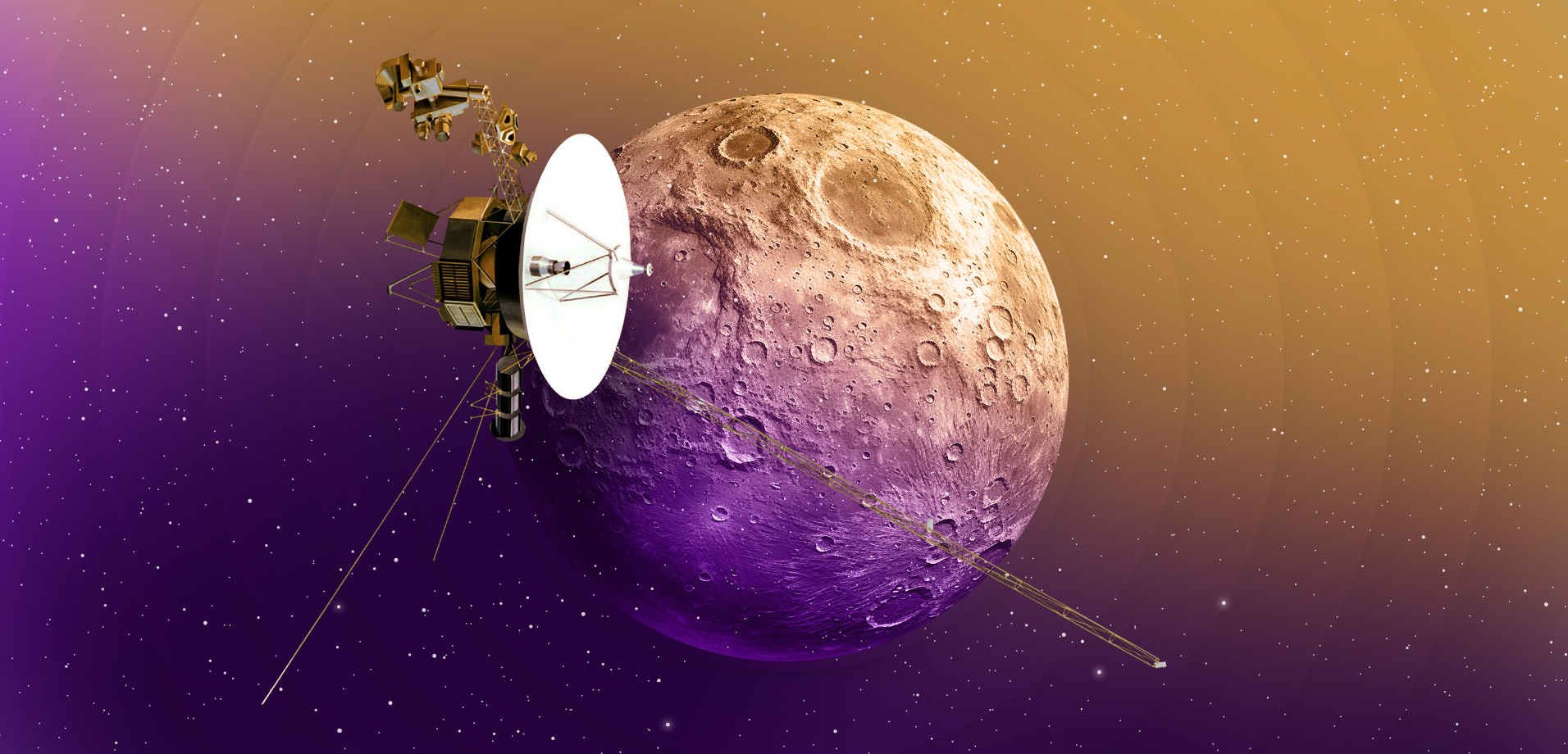
46 years of flying to infinity… That’s how long NASA’s Voyagers have been traveling through space. We’ve told you the story of Voyager 1 before, and now it’s the turn of its twin brother — Voyager 2. So, let’s dive into the details of the Voyager 2 mission.
General Voyager 2 facts
Voyager 2 is one of the most iconic and successful space probes ever launched by NASA. It is the first human-made object to fly by Neptune and Uranus, and the only spacecraft to study all four of the solar system’s giant planets at close range. Here are some key facts about Voyager 2:
- Voyager 2 launch date: August 20, 1977, from Cape Canaveral, Florida, aboard a Titan III-E/Centaur rocket.
- Primary mission objective: to learn the outer planets of the Solar System, including Jupiter, Saturn, Uranus, and Neptune, to study their atmospheres, magnetic fields, moons, and rings. Besides that similar to Voyager 1, Voyager 2 carries a “Golden Record” with sounds, images, and greetings from Earth, intended to communicate with potential extraterrestrial civilizations.
- Interstellar space : on November 5, 2018, Voyager 2 has exited the heliosphere (the region influenced by the Sun) and entered interstellar space. This made the probe the second human-made object to reach this milestone, after Voyager 1.
- Current mission status : Despite being launched 46 years ago, Voyager 2 is still operational and communicating with Earth. It continues to send back valuable data from the edge of our solar system, providing insights into the conditions of interstellar space.
- Current distance from Earth: over 19.9 billion kilometres (about 12.4 billion miles) or 133 A.U.
Planetary Flybys (closest approach):
- Jupiter: on July 9, 1979,
- Saturn: on August 25, 1981,
- Uranus: on January 24, 1986,
- Neptune: on August 25, 1989
How did the Voyager project originate?

The project idea originated in 1964 at the suggestion of Gary Flandro from NASA’s Jet Propulsion Laboratory. The young engineer pointed out that the alignment of the outer planets of the solar system, which occurs once every 175 years and was supposed to occur in the late 1970s, could allow one explorer to sequentially visit the systems of all four gas giants using a gravitational manoeuvre. Not wanting to miss this unique opportunity, NASA launched the Grand Tour program, in which it planned to build two new probes for two missions instead of one. The first launch was planned in 1977 (to Jupiter, Saturn and Pluto), and the second in 1979 to Jupiter, Uranus and Neptune. Such a scheme made it possible to reduce the total mission time, compared to the launch of one probe, by almost half: from 13 to 7.5 years.
But the American budget was not without limits, and in December 1971, the US Congress cancelled funding for the Grand Tour in favour of the already approved Space Shuttle program. Instead, NASA was asked to limit itself to visiting only two planets, Jupiter and Saturn, using two probes of the then-well-established Mariner class.
The program’s working title, Mariner Jupiter-Saturn, was changed to Voyager just a few months before launch. NASA felt that Mariner 11 and 12, improved specifically for the mission, were worthy of a separate name.
What is Voyager 2?
Voyager 2 is a space probe, unique, and so incredibly reliable and stable, that, even after 45 years of travelling into outer space, it is still proving itself. The probes are almost identical in design and set of scientific instruments. Each probe about five million parts, with minor differences due to different mission objectives.
Here are the specs of the Voyager 2 spacecraft:
Voyager 2 pictures
These photos from the NASA/SPL site help you to get an in-depth look at the science instruments aboard the Voyager spacecraft and the construction details of the probe.

When was Voyager 2 launched?
Voyager 2 launched on August 20, 1977, from Cape Canaveral SLC-41, on a Titan IIIE/Centaur launch vehicle.
Even though the study of Uranus and Neptune was not officially included in the mission program (a guaranteed reaching of these planets would require the construction of devices with more advanced characteristics), the flight trajectory was calculated based on this possibility.
Why was Voyager 2 launched first?
The launch order and flight paths of the probes were planned to ensure that the overall goals of the program were achieved.
Although Voyager 2 was launched 16 days before its companion, due to its longer trajectory, it should have reached Jupiter and Saturn later than Voyager 1 by 4 and 9 months, respectively. This made it possible to adjust the Voyager 2 flight program depending on the results obtained by Voyager 1; in particular, to decide whether to send it along the Grand Tour trajectory, that is, to Uranus and Neptune.
Besides, if the launch of Voyager 2 had failed, then Voyager 1 could have been sent along the Grand Tour trajectory.
Where did Voyager 2 visit?
During the first 12 years of its journey, Voyager 2 visited all four planets of the outer group, making a lot of important discoveries that significantly expanded the scientific understanding of these gas giants’ systems.

Between December 10, 1977, and October 21, 1978, Voyager 2 successfully crossed the asteroid belt and headed towards Jupiter. From April 24 to August 5, 1979, the probe made observations of Jupiter and its five satellites Callisto, Io, Ganymede, Amalthea and Europa, sending more than 17,000 images back to Earth. On July 9, 1979, the spacecraft made its closest approach to Jupiter at a distance of 350,000 miles from the planet’s upper layer clouds. Voyager 2 showed that the Great Red Spot is a complex system of storms, found signs of water on Io’s surface, confirmed the existence of a thin ring surrounding the planet, and discovered another moon beyond it, later named Adrastea.

Voyager 2 began its long-range observations of Saturn on June 5, 1981, when it was still 41 million miles away from the planet. By September 28, when observations of the Saturn system were completed, the spacecraft sent 16,000 images of the planet, its rings and moons back to Earth. On September 29, Voyager 2 fired its course correction thrusters to head towards its next target, Uranus.

Voyager 2 began observing Uranus on November 4, 1985, creating a series of time-lapse videos of the planet and its surroundings. Due to the axial tilt of Uranus by almost 98 degrees to its orbital plane (the planet is practically lying on its side), the meeting of Voyager 2 was like aiming for a bull’s eye. On January 24, 1986, about 11 hours before the closest approach, Voyager 2 entered the planet’s magnetosphere.
The encounter phase with Uranus was completed on February 25, 1986. What did Voyager 2 discover there? The spacecraft took over 7,000 pictures, revealing 11 new moons and two new rings.

Voyager 2 Neptune research continued from June 5 to October 2, 1989. The probe made more than 9,000 images of the planet and its surroundings, which helped to discover five new satellites of Proteus, Talas, Naiad, Despina, and Galatea, while also confirming the existence of the Larissa satellite. The probe also revealed traces of geysers on Triton that spew dark material into the rarefied atmosphere of the moon, which later settles back to its surface.
Interstellar space

After the reconnaissance of Neptune, Voyager 2 began its interstellar mission, which continues to this day. On November 5, 2018, the ship left the heliosphere and entered interstellar space.
On July 18, 2023, Voyager 2 overtook Pioneer 10 and became the second farthest spacecraft from the Sun after Voyager 1.
Where is Voyager 2 now in 2023?

Voyager 2 is currently in the constellation of Pavo, at a distance of 9.9 billion kilometres (about 12.4 billion miles) or 133 A.U from Earth. The current Right Ascension is 20h 08 m 36s and the Declination is -59° 13’ 56”.
Right now, from the United Kingdom, the spacecraft is not visible because it is below the horizon. You can check Voyager 2 Rise and Set Times to know when it will rise at your location.
How fast is Voyager 2 travelling?
Voyager 2 speed is approximately 55,470 km/h (or 34,390 miles per hour or 15 km/s) relative to the Sun. If it were in the atmosphere, it would fly around the Earth’s equator in 14 minutes. The ship has already passed all the large objects, so their gravity does not prevent it from developing a speed sufficient to leave the solar system.
In 2018, Voyager 2 reached the edge of the heliosphere, which extends twice as far as Pluto, but to break out of the Solar System, it needs to cross the Outer Limit of the Oort Cloud, which defines the hypothetical cosmographic boundary of the Solar System. According to scientists, this will take another 30,000 years. Incredibly long!
Has Voyager 2 lost contact?
On 21st July 2023, at a distance of 133 AU (19.9 billion km) from Earth, contact with the Voyager 2 probe was lost . The reason was an erroneous command sent to the Voyager computer, as a result of which it changed the orientation of the ship, and its antenna deviated from the line of communication with the Earth by two degrees. This was enough to stop the spacecraft from transmitting and receiving data.
Fortunately, just for such a case, the probe was programmed to “reset” its orientation data several times a year so that its antenna always remained directed towards the Earth. The next reset will take place on October 15th. But NASA decided not to risk it. They used a powerful radio telescope in the Australian capital, Canberra, to bombard the Voyager 2 area with messages containing the right command in the hope of regaining lost contact.
As a result, on 4th August, the space agency confirmed that the data from the spacecraft had been received and that it was working correctly.
Will Voyager 2 ever stop?
This can happen if the probe collides with another object or is pulled into the orbit of a celestial body by its gravity. But Voyager 2 travels in interstellar space, which is very rarefied, so scientists consider such a scenario unlikely. Even when a ship runs out of its energy sources and is no longer steerable, it will simply drift forever in desolate space.
Will Voyager 2 ever come back to Earth?

No, Voyager 2 will never return to Earth, primarily, because it was not built for a return. But even assuming NASA wants to bring the probe back, its engineers don’t have a plan for it. The probe is too far away from Earth and has lost too much power to make a thruster adjustment for the return course.
One can only hope that Voyager 2 fulfills its final mission — deliver a famous Golden Record , a message to any potential extraterrestrial civilizations. After all, there must be someone in this universe besides us.
Voyager 2 timeline
An amateur rocket enthusiast with a keen interest in all space-related activity. Looking forward to the day when the UK starts launching rockets into space and I'm able to watch launches (from a safe distance of course).
Cancel reply
Thank you for your comment! It will be visible on the site after moderation.
Related Articles

NASA Astronaut Captures Mesmerizing View of the Northern Lights From Space

How old is the Earth? Earth’s age explained

Dark abyss mystery: What’s inside a black hole?
Explore orbital today.

Companies in Space – Skyrora, Scotland

Journey to the Gas Giant: How long does it take to get to Jupiter?

Aphelion 2024: When Is Earth Farthest From the Sun?
By continuing to use orbitaltoday.com you will be agreeing to the website Terms and Conditions and the Use of Cookies while using the website and our services. Please also read our Privacy Policy under which, to the extent stated, you consent to the processing of your personal data.

We Need Your Support
If you like TheSkyLive and its completely ad-free experience, please consider a donation.
Support from our users is vital to help us cover costs for servers and network and, ultimately, keep this service online.

Voyager 2 live position and data
This page shows Voyager 2 location and other relevant astronomical data in real time. The celestial coordinates, magnitude, distances and speed are updated in real time and are computed using high quality data sets provided by the JPL Horizons ephemeris service (see acknowledgements for details). The sky map shown in the background represents a rectangular portion of the sky 60x40 arcminutes wide. By comparison the diameter of the full Moon is about 30 arcmins, so the full horizontal extent of the map is approximately 2 full Moons wide. Depending on the device you are using, the map can be dragged horizondally or vertically using the mouse or touchscreen. The deep sky image in the background is provided by the Digitized Sky Survey ( acknowledgements ).
Current close conjunctions
List of bright objects (stars brighter than magnitude 9.0 and galaxies brighter than magmitude 14.0) close to Voyager 2 (less than 1.5 degrees):
Additional resources
- 15 Days Ephemerides
- Interactive Sky Map (Planetarium)
- Rise & Set Times
- Distance from Earth
Astronomy databases
- The Digitized Sky Survey, a photographic survey of the whole sky created using images from different telescopes, including the Oschin Schmidt Telescope on Palomar Mountain
- The Hipparcos Star Catalogue, containing more than 100.000 bright stars
- The PGC 2003 Catalogue, containing information about 1 million galaxies
- The GSC 2.3 Catalogue, containing information about more than 2 billion stars and galaxies
Object Search

IMAGES
COMMENTS
Plot 1 is viewed from the north ecliptic pole, to scale. Plots 2 to 4 are third-angle projections at 20% scale. In the SVG file, hover over a trajectory or orbit to highlight it and its associated launches and flybys. Voyager 2 is a space probe launched by NASA on August 20, 1977, as a part of the Voyager program.
Voyager 2 also returned spectacular photos of Miranda, Oberon, Ariel, Umbriel, and Titania, five of Uranus' larger moons. In flying by Miranda at a range of only 17,560 miles (28,260 kilometers), the spacecraft came closest to any object so far in its nearly decade-long travels. Images of the moon showed a strange object whose surface was a ...
About the mission. The Voyager 2 spacecraft, which has been in operation since 1977 and is the only spacecraft to have ever visited Uranus and Neptune, has made its way to interstellar space, where its twin spacecraft, Voyager 1, has resided since August 2012. During its travels through the outer solar system, Voyager 2 visited all four gas ...
Voyager 1, the faster of the two probes, is currently over 13.6 billion miles (22 billion kilometers) from the Sun, while Voyager 2 is 11.3 billion miles (18.2 billion kilometers) from the Sun. It takes light about 16.5 hours to travel from Voyager 2 to Earth. By comparison, light traveling from the Sun takes about eight minutes to reach Earth.
Instrument Status. This is a real-time indicator of Voyagers' distance from Earth in astronomical units (AU) and either miles (mi) or kilometers (km). Note: Because Earth moves around the sun faster than Voyager 1 is speeding away from the inner solar system, the distance between Earth and the spacecraft actually decreases at certain times of ...
In about 40,000 years Voyager 2 will pass 1.7 light-years (9.7 trillion miles) from the star Ross 248, according to NASA JPL. The cosmic vagabond will continue its journey through interstellar ...
Article. Forty-five years ago, the Voyager 2 spacecraft left Earth to begin an epic journey that continues to this day. The first of a pair of spacecraft, Voyager 2 lifted off on Aug. 20, 1977. NASA's Jet Propulsion Laboratory (JPL) in Pasadena, California, manages the spacecraft on their missions to explore the outer planets and beyond.
NASA's Voyager 2 probe, currently on a journey toward interstellar space, has detected an increase in cosmic rays that originate outside our solar system. Launched in 1977, Voyager 2 is a little less than 11 billion miles (about 17.7 billion kilometers) from Earth, or more than 118 times the distance from Earth to the Sun. […]
The twin spacecraft Voyager 1 and Voyager 2 were launched by NASA in separate months in the summer of 1977 from Cape Canaveral, Florida. As originally designed, the Voyagers were to conduct closeup studies of Jupiter and Saturn, Saturn's rings, and the larger moons of the two planets. To accomplish their two-planet mission, the spacecraft were ...
The ambitious mission took advantage of a rare alignment of the outer planets before continuing its journey into interstellar space. Forty-five years ago, the Voyager 2 spacecraft left Earth to begin an epic journey that continues to this day. The first of a pair of spacecraft, Voyager 2 lifted off on Aug. 20, 1977.
The Voyager project is managed by the Jet Propulsion Laboratory for NASA's Office of Space Science and Applications. 818-354-5011. 1989-1246. NASA's Voyager 2 spacecraft today entered the observatoryphase of its flyby of Neptune, signaling the beginning of its final planetary encounter after nearly 12 years of exploring the outer solar system.
The plan will keep Voyager 2's science instruments turned on a few years longer than previously anticipated, enabling yet more revelations from interstellar space. Launched in 1977, the Voyager 2 spacecraft is more than 12 billion miles (20 billion kilometers) from Earth, using five science instruments to study interstellar space.
Voyager 2, launched August 20, 1977, visited Jupiter in 1979, Saturn in 1981 and Uranus in 1986 before making its closest approach to Neptune on August 25, 1989. Voyager 2 traveled 12 years at an average velocity of 19 kilometers a second (about 42,000 miles an hour) to reach Neptune, which is 30 times farther from the Sun than Earth is. ...
Nasa is back in full contact with its lost Voyager 2 probe months earlier than expected, the space agency said. In July a wrong command was made to the spacecraft, sent to explore space in 1977 ...
On Aug. 20, 1977, 45 years ago, an extraordinary spacecraft left this planet on a journey like no other. Voyager 2 was going to show us, for the first time, what the outer solar system planets ...
View interactive star map. Voyager 2 is an unmanned space probe launched by NASA on August 20, 1977, just a few weeks before its sister craft Voyager 1. Its mission was to study the outer planets of our solar system, including Jupiter, Saturn, Uranus, and Neptune. It was the first and only spacecraft to visit all four planets, and its ...
The Jet Propulsion Laboratory lost contact with Voyager 2 on July 21 after mistakenly pointing its antenna 2 degrees away from Earth. On Friday, contact was fully restored. Talk about a long ...
Fast Facts. NASA's Voyager 2 probe, currently on a journey toward interstellar space, has detected an increase in cosmic rays that originate outside our solar system.. Voyager 1 entered interstellar space in September 2013.; Voyager 2 is the only spacecraft to visit all four giant outer planets —Jupiter (1979 ), Saturn ( 1981), Uranus (1986 ) and Neptune (1989).
Karen Fox. NASA Headquarters, Washington. 202-358-1600. [email protected]. 2018-232. NASA's Voyager 2 probe, currently on a journey toward interstellar space, has detected an increase in cosmic rays that originate outside our solar system.
Grand Tour Of The Gas Giants. The Voyager 2 space probe was one of two probes launched as part of the Voyager Program in 1977 tasked with exploring the gas giants in the outer solar system.Voyager completed a gravitationally assisted 'Grand Tour' of all four gas giants which is only possible every 175 years. After its flyby of Neptune, the probe continued towards interstellar space with a ...
Voyager 2 (englisch voyager ‚Reisender') ist eine Raumsonde der NASA zur Erforschung des äußeren Planetensystems im Rahmen des Voyager-Programms. Sie wurde am 20. ... Rechenkapazitäten der Sonde waren umfangreiche Arbeiten am Boden nötig, die pro Jahr ca. 30 Millionen US-Dollar kosteten.
Voyager 2 is currently in the constellation of Pavo, at a distance of 9.9 billion kilometres (about 12.4 billion miles) or 133 A.U from Earth. The current Right Ascension is 20h 08 m 36s and the Declination is -59° 13' 56".
This page shows Voyager 2 location and other relevant astronomical data in real time. The celestial coordinates, magnitude, distances and speed are updated in real time and are computed using high quality data sets provided by the JPL Horizons ephemeris service (see acknowledgements for details). The sky map shown in the background represents a rectangular portion of the sky 60x40 arcminutes wide.